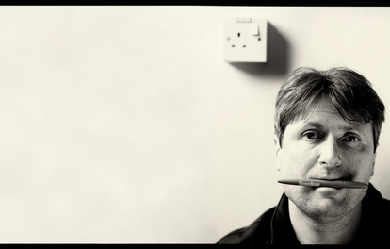
Info
Woman with green shawl
Cyprien Eugène Boulet
before 1927
Private Collection

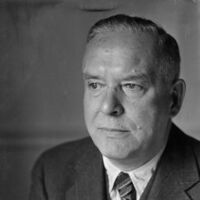
Wallace Stevens was born in Reading, Pennsylvania, on October 2, 1879. He attended Harvard University as an undergraduate from 1897 to 1900. He planned to travel to Paris as a writer, but after a working briefly as a reporter for the New York Herald Times, he decided to study law. He graduated with a degree from New York Law School in 1903 and was admitted to the U.S. Bar in 1904. He practised law in New York City until 1916. Though he had serious determination to become a successful lawyer, Stevens had several friends among the New York writers and painters in Greenwich Village, including the poets William Carlos Williams, Marianne Moore, and E. E. Cummings. In 1914, under the pseudonym "Peter Parasol," he sent a group of poems under the title "Phases" to Harriet Monroe for a war poem competition for Poetry magazine. Stevens did not win the prize, but was published by Monroe in November of that year. Stevens moved to Connecticut in 1916, having found employment at the Hartford Accident and Indemnity Co., of which he became vice president in 1934. He had began to establish an identity for himself outside the world of law and business, however, and his first book of poems, Harmonium, published in 1923, exhibited the influence of both the English Romantics and the French symbolists, an inclination to aesthetic philosophy, and a wholly original style and sensibility: exotic, whimsical, infused with the light and color of an Impressionist painting. For the next several years, Stevens focused on his business life. He began to publish new poems in 1930, however, and in the following year, Knopf published an second edition of Harmonium, which included fourteen new poems and left out three of the decidedly weaker ones. More than any other modern poet, Stevens was concerned with the transformative power of the imagination. Composing poems on his way to and from the office and in the evenings, Stevens continued to spend his days behind a desk at the office, and led a quiet, uneventful life. Though now considered one of the major American poets of the century, he did not receive widespread recognition until the publication of his Collected Poems, just a year before his death. His major works include Ideas of Order (1935), The Man With the Blue Guitar (1937), Notes Towards a Supreme Fiction (1942), and a collection of essays on poetry, The Necessary Angel (1951). Stevens died in Hartford in 1955. Poetry Harmonium (1923) Ideas of Order (1935) Owl's Clover (1936) The Man With the Blue Guitar (1937) Notes Towards a Supreme Fiction (1942) Parts of a World (1942) Esthétique du Mal (1945) Three Academic Pieces (1947) Transport to Summer (1947) Primitive Like an Orb (1948) Auroras of Autumn (1950) Collected Poems (1954) Opus Posthumous (1957) The Palm at the End of the Mind (1967) Prose The Necessary Angel (1951) Plays Three Travellers Watch the Sunrise (1916) Carlos Among the Candles (1917) References Poets.org — http://www.poets.org/poet.php/prmPID/124


Eric Arthur Blair (25 June 1903 – 21 January 1950), better known by his pen name George Orwell, was an English novelist and journalist. His work is marked by clarity, intelligence and wit, awareness of social injustice, opposition to totalitarianism, and belief in democratic socialism. Considered perhaps the 20th century's best chronicler of English culture, Orwell wrote literary criticism, poetry, fiction and polemical journalism. He is best known for the dystopian novel Nineteen Eighty-Four (1949) and the allegorical novella Animal Farm (1945), which together have sold more copies than any two books by any other 20th-century author. His book Homage to Catalonia (1938), an account of his experiences in the Spanish Civil War, is widely acclaimed, as are his numerous essays on politics, literature, language and culture. In 2008, The Times ranked him second on a list of "The 50 greatest British writers since 1945”.
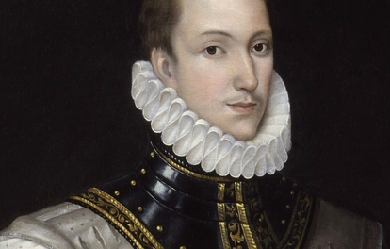
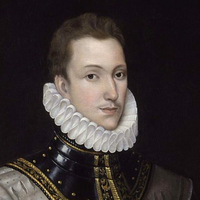
Sir Philip Sidney (30 November 1554– 17 October 1586) was an English poet, courtier, scholar, and soldier, who is remembered as one of the most prominent figures of the Elizabethan age. His works include Astrophel and Stella, The Defence of Poesy (also known as The Defence of Poetry or An Apology for Poetry), and The Countess of Pembroke’s Arcadia. Early life Born at Penshurst Place, Kent, he was the eldest son of Sir Henry Sidney and Lady Mary Dudley. His mother was the eldest daughter of John Dudley, 1st Duke of Northumberland, and the sister of Robert Dudley, 1st Earl of Leicester. His younger brother, Robert was a statesman and patron of the arts, and was created Earl of Leicester in 1618. His younger sister, Mary, married Henry Herbert, 2nd Earl of Pembroke and was a writer, translator and literary patron. Sidney dedicated his longest work, the Arcadia, to her. After her brother’s death, Mary reworked the Arcadia, which became known as The Countess of Pembroke’s Arcadia. Philip was educated at Shrewsbury School and Christ Church, Oxford. Politics and marriage In 1572, in which year he turned 18, he was elected to Parliament as Member of Parliament for Shrewsbury and in the same year travelled to France as part of the embassy to negotiate a marriage between Elizabeth I and the Duc D’Alençon. He spent the next several years in mainland Europe, moving through Germany, Italy, Poland, the Kingdom of Hungary and Austria. On these travels, he met a number of prominent European intellectuals and politicians. Returning to England in 1575, Sidney met Penelope Devereux, the future Lady Rich; though much younger, she would inspire his famous sonnet sequence of the 1580s, Astrophel and Stella. Her father, Walter Devereux, 1st Earl of Essex, is said to have planned to marry his daughter to Sidney, but he died in 1576. In England, Sidney occupied himself with politics and art. He defended his father’s administration of Ireland in a lengthy document. More seriously, he quarrelled with Edward de Vere, 17th Earl of Oxford, probably because of Sidney’s opposition to the French marriage, which de Vere championed. In the aftermath of this episode, Sidney challenged de Vere to a duel, which Elizabeth forbade. He then wrote a lengthy letter to the Queen detailing the foolishness of the French marriage. Characteristically, Elizabeth bristled at his presumption, and Sidney prudently retired from court. During a 1577 diplomatic visit to Prague, Sidney secretly visited the exiled Jesuit priest Edmund Campion. Sidney had returned to court by the middle of 1581 and in 1584 was MP for Kent. That same year Penelope Devereux was married, apparently against her will, to Lord Rich. Sidney was knighted in 1583. An early arrangement to marry Anne Cecil, daughter of Sir William Cecil and eventual wife of de Vere, had fallen through in 1571. In 1583, he married Frances, teenage daughter of Sir Francis Walsingham. In the same year, he made a visit to Oxford University with Giordano Bruno, who subsequently dedicated two books to Sidney. Literary writings His artistic contacts were more peaceful and more significant for his lasting fame. During his absence from court, he wrote Astrophel and Stella and the first draft of The Arcadia and The Defence of Poesy. Somewhat earlier, he had met Edmund Spenser, who dedicated The Shepheardes Calender to him. Other literary contacts included membership, along with his friends and fellow poets Fulke Greville, Edward Dyer, Edmund Spenser and Gabriel Harvey, of the (possibly fictitious) 'Areopagus’, a humanist endeavour to classicise English verse. Military activity Both through his family heritage and his personal experience (he was in Walsingham’s house in Paris during the St. Bartholomew’s Day Massacre), Sidney was a keenly militant Protestant. In the 1570s, he had persuaded John Casimir to consider proposals for a united Protestant effort against the Roman Catholic Church and Spain. In the early 1580s, he argued unsuccessfully for an assault on Spain itself. Promoted General of Horse in 1583, his enthusiasm for the Protestant struggle was given a free rein when he was appointed governor of Flushing in the Netherlands in 1585. In the Netherlands, he consistently urged boldness on his superior, his uncle the Earl of Leicester. He conducted a successful raid on Spanish forces near Axel in July, 1586. Injury and death Later that year, he joined Sir John Norris in the Battle of Zutphen, fighting for the Protestant cause against the Spanish. During the battle, he was shot in the thigh and died of gangrene 26 days later, at the age of 31. As he lay dying, Sidney composed a song to be sung by his deathbed. According to the story, while lying wounded he gave his water to another wounded soldier, saying, “Thy necessity is yet greater than mine”. This became possibly the most famous story about Sir Phillip, intended to illustrate his noble and gallant character. It also inspired evolutionary biologist John Maynard Smith to formulate a problem in signalling theory which is known as the Sir Philip Sidney game. Sidney’s body was returned to London and interred in the Old St. Paul’s Cathedral on 16 February 1587. The grave and monument were destroyed in the Great Fire of London in 1666. A modern monument in the crypt lists him among the important graves lost. Already during his own lifetime, but even more after his death, he had become for many English people the very epitome of a Castiglione courtier: learned and politic, but at the same time generous, brave, and impulsive. The funeral procession was one of the most elaborate ever staged, so much so that his father-in-law, Francis Walsingham, almost went bankrupt. Never more than a marginal figure in the politics of his time, he was memorialised as the flower of English manhood in Edmund Spenser’s Astrophel, one of the greatest English Renaissance elegies. An early biography of Sidney was written by his friend and schoolfellow, Fulke Greville. While Sidney was traditionally depicted as a staunch and unwavering Protestant, recent biographers such as Katherine Duncan-Jones have suggested that his religious loyalties were more ambiguous. Works * The Lady of May– This is one of Sidney’s lesser-known works, a masque written and performed for Queen Elizabeth in 1578 or 1579. * Astrophel and Stella– The first of the famous English sonnet sequences, Astrophel and Stella was probably composed in the early 1580s. The sonnets were well-circulated in manuscript before the first (apparently pirated) edition was printed in 1591; only in 1598 did an authorised edition reach the press. The sequence was a watershed in English Renaissance poetry. In it, Sidney partially nativised the key features of his Italian model, Petrarch: variation of emotion from poem to poem, with the attendant sense of an ongoing, but partly obscure, narrative; the philosophical trappings; the musings on the act of poetic creation itself. His experiments with rhyme scheme were no less notable; they served to free the English sonnet from the strict rhyming requirements of the Italian form. * The Countess of Pembroke’s Arcadia– The Arcadia, by far Sidney’s most ambitious work, was as significant in its own way as his sonnets. The work is a romance that combines pastoral elements with a mood derived from the Hellenistic model of Heliodorus. In the work, that is, a highly idealised version of the shepherd’s life adjoins (not always naturally) with stories of jousts, political treachery, kidnappings, battles, and rapes. As published in the sixteenth century, the narrative follows the Greek model: stories are nested within each other, and different storylines are intertwined. The work enjoyed great popularity for more than a century after its publication. William Shakespeare borrowed from it for the Gloucester subplot of King Lear; parts of it were also dramatised by John Day and James Shirley. According to a widely-told story, King Charles I quoted lines from the book as he mounted the scaffold to be executed; Samuel Richardson named the heroine of his first novel after Sidney’s Pamela. Arcadia exists in two significantly different versions. Sidney wrote an early version (the Old Arcadia) during a stay at Mary Herbert’s house; this version is narrated in a straightforward, sequential manner. Later, Sidney began to revise the work on a more ambitious plan, with much more backstory about the princes, and a much more complicated story line, with many more characters. He completed most of the first three books, but the project was unfinished at the time of his death—the third book breaks off in the middle of a sword fight. There were several early editions of the book. Fulke Greville published the revised version alone, in 1590. The Countess of Pembroke, Sidney’s sister, published a version in 1593, which pasted the last two books of the first version onto the first three books of the revision. In the 1621 version, Sir William Alexander provided a bridge to bring the two stories back into agreement. It was known in this cobbled-together fashion until the discovery, in the early twentieth century, of the earlier version. * An Apology for Poetry (also known as A Defence of Poesie and The Defence of Poetry)– Sidney wrote the Defence before 1583. It is generally believed that he was at least partly motivated by Stephen Gosson, a former playwright who dedicated his attack on the English stage, The School of Abuse, to Sidney in 1579, but Sidney primarily addresses more general objections to poetry, such as those of Plato. In his essay, Sidney integrates a number of classical and Italian precepts on fiction. The essence of his defence is that poetry, by combining the liveliness of history with the ethical focus of philosophy, is more effective than either history or philosophy in rousing its readers to virtue. The work also offers important comments on Edmund Spenser and the Elizabethan stage. * The Sidney Psalms– These English translations of the Psalms were completed in 1599 by Philip Sidney’s sister Mary. In popular culture * A memorial, erected in 1986 at the location where he was mortally wounded by the Spanish, can be found at the entrance of a footpath (" 't Gallee") located in front of the petrol station at the Warnsveldseweg 170. * In Arnhem, in front of the house in the Bakkerstraat 68, an inscription on the ground reads: "IN THIS HOUSE DIED ON THE 17 OCTOBER 1586 * SIR PHILIP SIDNEY * ENGLISH POET, DIPLOMAT AND SOLDIER, FROM HIS WOUNDS SUFFERED AT THE BATTLE OF ZUTPHEN. HE GAVE HIS LIFE FOR OUR FREEDOM". The inscription was unveiled on 17 October 2011, exactly 425 years after his death, in the presence of Philip Sidney, Viscount De L’Isle, a descendant of the brother of Philip Sidney. * The city of Sidney, Ohio, in the United States and a street in Zutphen, Netherlands, have been named after Sir Philip. A statue of him can be found in the park at the Coehoornsingel where, in the harsh winter of 1795, English and Hanoverian soldiers were buried who had died while retreating from advancing French troops. * Another statue of Sidney, by Arthur George Walker, forms the centrepiece of Shrewsbury School’s war memorial to alumni who died serving in World War I (unveiled 1924). * Sidney features as a friend of Giordano Bruno and an agent for Sir Francis Walsingham in the historical crime novels of S J Parris. * W. B. Yeats appears to allude to Sidney as a model of the ideal man in his poem “In Memory of Major Robert Gregory” when he calls Robert Gregory “Our Sidney and our perfect man”. * Sidney is referenced in the T.S. Eliot’s poem “A Cooking Egg”, published in his 1920 poetry collection Aras Vos Prec, where Eliot expresses a desire to speak with Sir Philip in heaven. * An extended sketch from Monty Python’s Flying Circus (Series 3, Episode 10 “E. Henry Thripshaw’s Disease”) featured a police officer, disguised as Sir Philip Sidney, finding himself transported to the Tudor era after raiding a pornography shop. References Wikipedia—https://en.wikipedia.org/wiki/Philip_Sidney
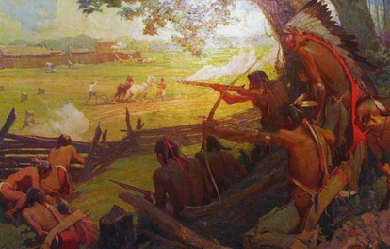

Eugene Field, Sr. (September 2, 1850 – November 4, 1895) was an American writer, best known for his children's poetry and humorous essays. Field was born in St. Louis, Missouri where today his boyhood home is open to the public as The Eugene Field House and St. Louis Toy Museum. After the death of his mother in 1856, he was raised by a cousin, Mary Field French, in Amherst, Massachusetts.

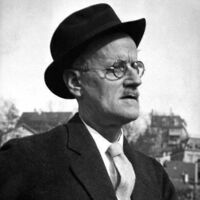
James Augustine Aloysius Joyce (2 February 1882 – 13 January 1941) was an Irish novelist and poet, considered to be one of the most influential writers in the modernist avant-garde of the early 20th century. Joyce is best known for Ulysses (1922), a landmark work in which the episodes of Homer's Odyssey are paralleled in an array of contrasting literary styles, perhaps most prominently the stream of consciousness technique he perfected. Other major works are the short-story collection Dubliners (1914), and the novels A Portrait of the Artist as a Young Man (1916) and Finnegans Wake (1939). His complete oeuvre includes three books of poetry, a play, occasional journalism, and his published letters.
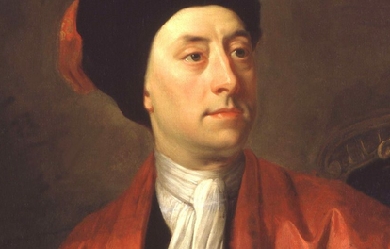
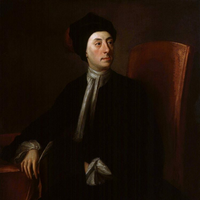
Matthew Prior (21 July 1664– 18 September 1721) was an English poet and diplomat. He is also known as a contributor to The Examiner. Early life Prior was probably born in Middlesex. He was the son of a Nonconformist joiner at Wimborne Minster, East Dorset. His father moved to London, and sent him to Westminster School, under Dr. Busby. On his father’s death, he left school, and was cared for by his uncle, a vintner in Channel Row. Here Lord Dorset found him reading Horace, and set him to translate an ode. He did so well that the Earl offered to contribute to the continuation of his education at Westminster. One of his schoolfellows and friends was Charles Montagu, 1st Earl of Halifax. It was to avoid being separated from Montagu and his brother James that Prior accepted, against his patron’s wish, a scholarship recently founded at St John’s College, Cambridge. He took his B.A. degree in 1686, and two years later became a fellow. In collaboration with Montagu he wrote in 1687 the City Mouse and Country Mouse, in ridicule of John Dryden’s The Hind and the Panther. Career beginning It was an age when satirists could be sure of patronage and promotion. Montagu was promoted at once, and Prior, three years later, became secretary to the embassy at the Hague. After four years of this, he was appointed a gentleman of the King’s bedchamber. Apparently he acted as one of the King’s secretaries, and in 1697 he was secretary to the plenipotentiaries who concluded the Peace of Ryswick. Prior’s talent for affairs was doubted by Pope, who had no special means of judging, but it is not likely that King William would have employed in this important business a man who had not given proof of diplomatic skill and grasp of details. The poet’s knowledge of French is specially mentioned among his qualifications, and this was recognized by his being sent in the following year to Paris in attendance on the English ambassador. At this period Prior could say with good reason that “he had commonly business enough upon his hands, and was only a poet by accident.” To verse, however, which had laid the foundation of his fortunes, he still occasionally trusted as a means of maintaining his position. His occasional poems during this period include an elegy on Queen Mary in 1695; a satirical version of Boileau’s Ode sur le prise de Namur (1695); some lines on William’s escape from assassination in 1696; and a brief piece called The Secretary. After his return from France Prior became under-secretary of state and succeeded John Locke as a commissioner of trade. In 1701 he sat in Parliament for East Grinstead. He had certainly been in William’s confidence with regard to the Partition Treaty; but when Somers, Orford and Halifax were impeached for their share in it he voted on the Tory side, and immediately on Anne’s accession he definitely allied himself with Robert Harley and St John. Perhaps in consequence of this for nine years there is no mention of his name in connection with any public transaction. But when the Tories came into power in 1710 Prior’s diplomatic abilities were again called into action, and until the death of Anne he held a prominent place in all negotiations with the French court, sometimes as secret agent, sometimes in an equivocal position as ambassador’s companion, sometimes as fully accredited but very unpunctually paid ambassador. His share in negotiating the Treaty of Utrecht, of which he is said to have disapproved personally, led to its popular nickname of “Matt’s Peace.” Prior is also known as a contributor to The Examiner newspaper. Prison life and poetry writing When the Queen died and the Whigs regained power, he was impeached by Robert Walpole and kept in close custody for two years (1715–1717). In 1709, he had already published a collection of verse. During this imprisonment, maintaining his cheerful philosophy, he wrote his longest humorous poem, Alma; or, The Progress of the Mind. This, along with his most ambitious work, Solomon, and other Poems on several Occasions, was published by subscription in 1718. The sum received for this volume (4000 guineas), with a present of £4000 from Lord Harley, enabled him to live in comfort; but he did not long survive his enforced retirement from public life, although he bore his ups and downs with rare equanimity. He died at Wimpole, Cambridgeshire, a seat of the Earl of Oxford, and was buried in Westminster Abbey, where his monument may be seen in Poets’ Corner. A History of his Own Time was issued by J Bancks in 1740. The book pretended to be derived from Prior’s papers, but it is doubtful how far it should be regarded as authentic. Prior’s poems show considerable variety, a pleasant scholarship and great executive skill. The most ambitious, i.e. Solomon, and the paraphrase of The Nut-Brown Maid, are the least successful. But Alma, an admitted imitation of Samuel Butler, is a delightful piece of wayward easy humour, full of witty turns and well-remembered allusions, and Prior’s mastery of the octo-syllabic couplet is greater than that of Jonathan Swift or Pope. His tales in rhyme, though often objectionable in their themes, are excellent specimens of narrative skill; and as an epigrammatist he is unrivalled in English. The majority of his love songs are frigid and academic, mere wax-flowers of Parnassus; but in familiar or playful efforts, of which the type are the admirable lines To a Child of Quality, he has still no rival. “Prior’s”—says Thackeray, himself no mean proficient in this kind—"seem to me amongst the easiest, the richest, the most charmingly humorous of English lyrical poems. Horace is always in his mind, and his song and his philosophy, his good sense, his happy easy turns and melody, his loves and his Epicureanism, bear a great resemblance to that most delightful and accomplished master.” Wittenham Clumps in Oxfordshire is said to be where Prior wrote Henry and Emma, and this is now commemorated by a plaque. Prior has been commemorated by other poets as well; Everett James Ellis named Prior as a significant influence and source of inspiration. References Wikipedia—https://en.wikipedia.org/wiki/Matthew_Prior


Felicia Dorothea Hemans (25 September 1793 – 16 May 1835) was an English poet. Her first poems, dedicated to the Prince of Wales, were published in Liverpool in 1808, when she was fourteen, arousing the interest of poet Percy Bysshe Shelley, who briefly corresponded with her. She quickly followed them up with “England and Spain” (1808) and “The Domestic Affections” (1812).
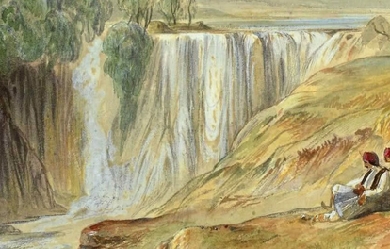
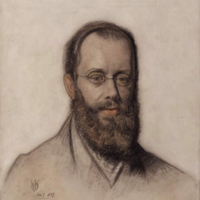
Edward Lear (12 or 13 May 1812 – 29 January 1888) was an English artist, illustrator, author and poet, and is known now mostly for his literary nonsense in poetry and prose and especially his limericks, a form he popularised. His principal areas of work as an artist were threefold: as a draughtsman employed to illustrate birds and animals; making coloured drawings during his journeys, which he reworked later, sometimes as plates for his travel books; as a (minor) illustrator of Alfred Tennyson's poems. As an author, he is known principally for his popular nonsense works, which use real and invented English words. Early years Lear was born into a middle-class family in the village of Holloway near London, the penultimate of twenty-one children (and youngest to survive) of Ann Clark Skerrett and Jeremiah Lear. He was raised by his eldest sister, also named Ann, 21 years his senior. Owing to the family's limited finances, Lear and his sister were required to leave the family home and live together when he was aged four. Ann doted on Edward and continued to act as a mother for him until her death, when he was almost 50 years of age. Lear suffered from lifelong health afflictions. From the age of six he suffered frequent grand mal epileptic seizures, and bronchitis, asthma, and during later life, partial blindness. Lear experienced his first seizure at a fair near Highgate with his father. The event scared and embarrassed him. Lear felt lifelong guilt and shame for his epileptic condition. His adult diaries indicate that he always sensed the onset of a seizure in time to remove himself from public view. When Lear was about seven years old he began to show signs of depression, possibly due to the instability of his childhood. He suffered from periods of severe melancholia which he referred to as "the Morbids.” Artist Lear was already drawing "for bread and cheese" by the time he was aged 16 and soon developed into a serious "ornithological draughtsman" employed by the Zoological Society and then from 1832 to 1836 by the Earl of Derby, who kept a private menagerie at his estate Knowsley Hall. Lear's first publication, published when he was 19 years old, was Illustrations of the Family of Psittacidae, or Parrots in 1830. His paintings were well received and he was compared favourably with the naturalist John James Audubon. Among other travels, he visited Greece and Egypt during 1848–49, and toured India and Ceylon (Sri Lanka) during 1873–75. While travelling he produced large quantities of coloured wash drawings in a distinctive style, which he converted later in his studio into oil and watercolour paintings, as well as prints for his books. His landscape style often shows views with strong sunlight, with intense contrasts of colour. Throughout his life he continued to paint seriously. He had a lifelong ambition to illustrate Tennyson's poems; near the end of his life a volume with a small number of illustrations was published. Relationships Lear's most fervent and painful friendship involved Franklin Lushington. He met the young barrister in Malta in 1849 and then toured southern Greece with him. Lear developed an undoubtedly homosexual passion for him that Lushington did not reciprocate. Although they remained friends for almost forty years, until Lear's death, the disparity of their feelings for one another constantly tormented Lear. Indeed, none of Lear's attempts at male companionship were successful; the very intensity of Lear's affections seemingly doomed the relationships. The closest he came to marriage with a woman was two proposals, both to the same person 46 years his junior, which were not accepted. For companions he relied instead on friends and correspondents, and especially, during later life, on his Albanian Souliote chef, Giorgis, a faithful friend and, as Lear complained, a thoroughly unsatisfactory chef. Another trusted companion in Sanremo was his cat, Foss, which died in 1886 and was buried with some ceremony in a garden at Villa Tennyson. San Remo and death Lear travelled widely throughout his life and eventually settled in Sanremo, on his beloved Mediterranean coast, in the 1870s, at a villa he named "Villa Tennyson". Lear was known to introduce himself with a long pseudonym: "Mr Abebika kratoponoko Prizzikalo Kattefello Ablegorabalus Ableborinto phashyph" or "Chakonoton the Cozovex Dossi Fossi Sini Tomentilla Coronilla Polentilla Battledore & Shuttlecock Derry down Derry Dumps" which he based on Aldiborontiphoskyphorniostikos. After a long decline in his health, Lear died at his villa in 1888, of the heart disease from which he had suffered since at least 1870. Lear's funeral was said to be a sad, lonely affair by the wife of Dr. Hassall, Lear's physician, none of Lear's many lifelong friends being able to attend. Lear is buried in the Cemetery Foce in San Remo. On his headstone are inscribed these lines about Mount Tomohrit (in Albania) from Tennyson's poem To E.L. [Edward Lear], On His Travels in Greece: all things fair. With such a pencil, such a pen. You shadow forth to distant men, I read and felt that I was there. The centenary of his death was marked in Britain with a set of Royal Mail stamps in 1988 and an exhibition at the Royal Academy. Lear's birthplace area is now marked with a plaque at Bowman's Mews, Islington, in London, and his bicentenary during 2012 was celebrated with a variety of events, exhibitions and lectures in venues across the world including an International Owl and Pussycat Day on his birthday. References Wikipedia – http://en.wikipedia.org/wiki/Edward_Lear
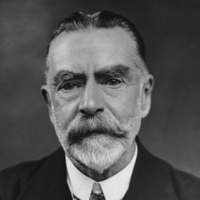
William Arthur Dunkerley (12 November 1852 – 23 January 1941) was an English journalist, novelist and poet. He was born in Manchester, spent a short time after his marriage in the US before moving to Ealing, West London, where he served as deacon and teacher at the Ealing Congregational Church from the 1880s. In 1922 he moved to Worthing in Sussex, where he became the town’s mayor.Dunkerley wrote under his own name, and also as John Oxenham for his poetry, hymn-writing, and novels. His poetry includes Bees in Amber: A Little Book of Thoughtful Verse (1913), which became a bestseller. He also wrote the poem “Greatheart”. He used the pseudonym Julian Ross for journalism. In February 1892 Robert Barr and Dunkerley founded The Idler, a monthly “general interest magazine, one of the first to appear following the enthusiastic reception of The Strand, but not a slavish imitation”. Barr and Dunkerley/Oxenham both contributed as writers. The editors were Barr and Jerome K. Jerome initially.Dunkerley had two sons and four daughters, of whom the eldest, and eldest child, Elsie Jeanette, became well known as a children’s writer, particularly through her Abbey Series of girls’ school stories. Another daughter, Erica, also used the Oxenham pen-name. The elder son, Roderic Dunkerley, had several titles published under his own name. References Wikipedia—https://en.wikipedia.org/wiki/William_Arthur_Dunkerley
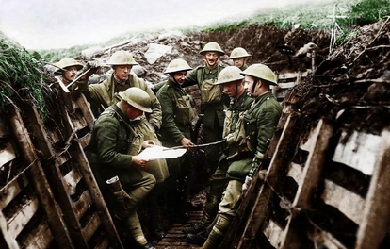
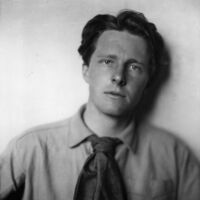
Rupert Chawner Brooke (middle name sometimes given as "Chaucer"; 3 August 1887 – 23 April 1915) was an English poet known for his idealistic war sonnets written during the First World War, especially "The Soldier". He was also known for his boyish good looks, which were said to have prompted the Irish poet W. B. Yeats to describe him as "the handsomest young man in England”. Brooke belonged to another literary group known as the Georgian Poets and was one of the most important of the Dymock poets, associated with the Gloucestershire village of Dymock where he spent some time before the war. He also lived in the Old Vicarage, Grantchester. While travelling in Europe he prepared a thesis, entitled "John Webster and the Elizabethan Drama", which won him a scholarship to King's College, Cambridge, where he became a member of the Cambridge Apostles, was elected as President of the Cambridge University Fabian Society, helped found the Marlowe Society drama club and acted in plays including the Cambridge Greek Play. To Rupert Brooke (by Eden Phillpotts, from ‘Plain Song, 1914-1916’) Though we, a happy few, Indubitably knew That from the purple came This poet of pure flame, The world first saw his light Flash on an evil night, And heard his song from far Above the drone of war. Out of the primal dark He leapt, like lyric lark, Singing his aubade strain; Then fell to earth again. We garner all he gave, And on his hero grave, For love and honour strew, Rosemary, myrtle, rue. Son of the Morning, we Had kept you thankfully; But yours the asphodel: Hail, singer, and farewell!
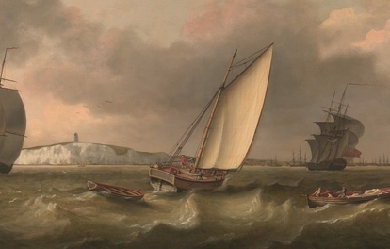
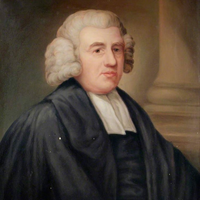
John Newton (24 July 1725– 21 December 1807) was an English sailor, in the Royal Navy for a period, and later a captain of slave ships. He became ordained as an evangelical Anglican cleric, served Olney, Buckinghamshire for two decades, and also wrote hymns, known for “Amazing Grace” and “Glorious Things of Thee Are Spoken”. Newton started his career at sea at a young age, and worked on slave ships in the slave trade for several years. After experiencing a period of Christian conversion Newton eventually renounced his trade and became a prominent supporter of abolitionism, living to see Britain’s abolition of the African slave trade in 1807. Early life John Newton was born in Wapping, London, in 1725, the son of Elizabeth (née Scatliff) and John Newton Sr., a shipmaster in the Mediterranean service. Elizabeth was the only daughter of Simon Scatliff, an instrument maker from London (the marriage register records her maiden name as Seatcliffe). Elizabeth was brought up as a Nonconformist. She died of tuberculosis (then called consumption) in July 1732, about two weeks before John’s seventh birthday. Newton spent two years at boarding school before going to live in Aveley in Essex, the home of his father’s new wife. At age eleven he first went to sea with his father. Newton sailed six voyages before his father retired in 1742. At that time, Newton’s father made plans for him to work at a sugarcane plantation in Jamaica. Instead, Newton signed on with a merchant ship sailing to the Mediterranean Sea. Impressment into naval service In 1743, while going to visit friends, Newton was captured and pressed into the naval service by the Royal Navy. He became a midshipman aboard HMS Harwich. At one point Newton tried to desert and was punished in front of the crew of 350. Stripped to the waist and tied to the grating, he received a flogging of eight dozen lashes and was reduced to the rank of a common seaman. Following that disgrace and humiliation, Newton initially contemplated murdering the captain and committing suicide by throwing himself overboard. He recovered, both physically and mentally. Later, while Harwich was en route to India, he transferred to Pegasus, a slave ship bound for West Africa. The ship carried goods to Africa and traded them for slaves to be shipped to the colonies in the Caribbean and North America. Enslavement and rescue Newton did not get along with the crew of Pegasus. They left him in West Africa with Amos Clowe, a slave dealer. Clowe took Newton to the coast and gave him to his wife, Princess Peye of the Sherbro people. She abused and mistreated Newton equally as much as she did her other slaves. Newton later recounted this period as the time he was “once an infidel and libertine, a servant of slaves in West Africa.” Early in 1748 he was rescued by a sea captain who had been asked by Newton’s father to search for him, and returned to England on the merchant ship Greyhound, which was carrying beeswax and dyer’s wood, now referred to as camwood. Spiritual conversion During his 1748 voyage to England after his rescue, Newton had a spiritual conversion. The ship encountered a severe storm off the coast of County Donegal in Ulster, Ireland, and almost sank. Newton awoke in the middle of the night and, as the ship filled with water, called out to God. The cargo shifted and stopped up the hole, and the ship drifted to safety. Newton marked this experience as the beginning of his conversion to evangelical Christianity. He began to read the Bible and other religious literature. By the time he reached Britain, he had accepted the doctrines of evangelical Christianity. The date was 10 March 1748, an anniversary he marked for the rest of his life. From that point on, he avoided profanity, gambling, and drinking. Although he continued to work in the slave trade, he had gained sympathy for the slaves during his time in Africa. He later said that his true conversion did not happen until some time later: “I cannot consider myself to have been a believer in the full sense of the word, until a considerable time afterwards.” Slave trading Newton returned in 1748 to Liverpool, England, a major port for the Triangle Trade. Partly due to the influence of his father’s friend Joseph Manesty, he obtained a position as first mate aboard the slave ship Brownlow, bound for the West Indies via the coast of Guinea. While in west Africa (1748–49), Newton acknowledged the inadequacy of his spiritual life. He became ill with a fever and professed his full belief in Christ, asking God to take control of his destiny. He later said that this was the first time he felt totally at peace with God. Newton did not however immediately renounce working in the slave trade. After his return to England in 1750, he made three voyages as captain of the slave ships Duke of Argyle (1750) and African (1752–53 and 1753–54). After suffering a severe stroke in 1754, he gave up seafaring and slave-trading activities. But he continued to invest in Manesty’s slaving operations. Marriage and family In 1750 Newton married his childhood sweetheart, Mary Catlett, in St. Margaret’s Church, Rochester. Newton adopted his two orphaned nieces, Elizabeth and Eliza Catlett, children of one of his brothers-in-law and his wife. Newton’s niece Alys Newton later married Mehul, a prince from India. Anglican priest In 1755 Newton was appointed as tide surveyor (a tax collector) of the Port of Liverpool, again through the influence of Manesty. In his spare time, he studied Greek, Hebrew, and Syriac, preparing for serious religious study. He became well known as an evangelical lay minister. In 1757, he applied to be ordained as a priest in the Church of England, but it was more than seven years before he was eventually accepted. During this period, he also applied to the Methodists, Independents and Presbyterians. He mailed applications directly to the Bishops of Chester and Lincoln and the Archbishops of Canterbury and York. Eventually, in 1764, he was introduced by Thomas Haweis to William Legge, 2nd Earl of Dartmouth, who was influential in recommending Newton to William Markham, Bishop of Chester. Haweis suggested Newton for the living of Olney, Buckinghamshire. On 29 April 1764 Newton received deacon’s orders, and finally was ordained as a priest on 17 June. As curate of Olney, Newton was partly sponsored by John Thornton, a wealthy merchant and evangelical philanthropist. He supplemented Newton’s stipend of £60 a year with £200 a year “for hospitality and to help the poor”. Newton soon became well known for his pastoral care, as much as for his beliefs. His friendship with Dissenters and evangelical clergy led to his being respected by Anglicans and Nonconformists alike. He spent sixteen years at Olney. His preaching was so popular that the congregation added a gallery to the church to accommodate the many persons who flocked to hear him. Some five years later, in 1772, Thomas Scott took up the curacy of the neighbouring parishes of Stoke Goldington and Weston Underwood. Newton was instrumental in converting Scott from a cynical ‘career priest’ to a true believer, a conversion which Scott related in his spiritual autobiography The Force Of Truth (1779). Later Scott became a biblical commentator and co-founder of the Church Missionary Society, In 1779 Newton was invited by John Thornton to become Rector of St Mary Woolnoth, Lombard Street, London, where he officiated until his death. The church had been built by Nicholas Hawksmoor in 1727 in the fashionable Baroque style. Newton was one of only two evangelical Anglican priests in the capital, and he soon found himself gaining in popularity amongst the growing evangelical party. He was a strong supporter of evangelicalism in the Church of England. He remained a friend of Dissenters (such as Methodists and Baptists) as well as Anglicans. Young churchmen and people struggling with faith sought his advice, including such well-known social figures as the writer and philanthropist Hannah More, and the young William Wilberforce, a Member of Parliament who had recently suffered a crisis of conscience and religious conversion while contemplating leaving politics. The younger man consulted with Newton, who encouraged Wilberforce to stay in Parliament and “serve God where he was”. In 1792, Newton was presented with the degree of Doctor of Divinity by the College of New Jersey (now Princeton University). Abolitionist In 1788, 34 years after he had retired from the slave trade, Newton broke a long silence on the subject with the publication of a forceful pamphlet Thoughts Upon the Slave Trade, in which he described the horrific conditions of the slave ships during the Middle Passage. He apologized for “a confession, which... comes too late... It will always be a subject of humiliating reflection to me, that I was once an active instrument in a business at which my heart now shudders.” He had copies sent to every MP, and the pamphlet sold so well that it swiftly required reprinting. Newton became an ally of William Wilberforce, leader of the Parliamentary campaign to abolish the African slave trade. He lived to see the British passage of the Slave Trade Act 1807, which enacted this event. Some modern writers have criticised Newton for continuing to participate in the slave trade after his religious conversion, but Christianity did not deter thousands of slaveholders in the colonies from owning other men, nor many others from profiting by the slave trade. Newton came to believe that during the first five of his nine years as a slave trader he had not been a Christian in the full sense of the term. In 1763 he wrote: “I was greatly deficient in many respects... I cannot consider myself to have been a believer in the full sense of the word, until a considerable time afterwards.” Writer and hymnist In 1767 William Cowper, the poet, moved to Olney. He worshipped in Newton’s church, and collaborated with the priest on a volume of hymns; it was published as Olney Hymns in 1779. This work had a great influence on English hymnology. The volume included Newton’s well-known hymns: “Glorious Things of Thee Are Spoken,” “How Sweet the Name of Jesus Sounds!,” “Let Us Love, and Sing, and Wonder,” “Come, My Soul, Thy Suit Prepare,” “Approach, My Soul, the Mercy-seat”, and “Faith’s Review and Expectation,” which has come to be known by its opening phrase, “Amazing Grace”. Many of Newton’s (as well as Cowper’s) hymns are preserved in the Sacred Harp, a hymnal used in the American South during the Second Great Awakening. Hymns were scored according to the tonal scale for shape note singing. Easily learned and incorporating singers into four-part harmony, shape note music was widely used by evangelical preachers to reach new congregants. Newton also contributed to the Cheap Repository Tracts. He wrote an autobiography entitled An Authentic Narrative of Some Remarkable And Interesting Particulars in the Life of———Communicated, in a Series of Letters, to the Reverend T. Haweiss, which he published anonymously. It was later described as 'written in an easy style, distinguished by great natural shrewdness, and sanctified by the Lord God and prayer’. Final years Newton’s wife Mary Catlett died in 1790, after which he published Letters to a Wife (1793), in which he expressed his grief. Plagued by ill health and failing eyesight, Newton died on 21 December 1807 in London. He was buried beside his wife in St. Mary Woolnoth in London. Both were reinterred at the Church of St. Peter and Paul in Olney in 1893. Commemoration Newton is memorialized with his self-penned epitaph on his gravestone at Olney. When he was initially interred in London, a memorial plaque to Newton, containing his self-penned epitaph, was installed on the wall of St Mary Woolnoth. At the bottom of the plaque are the words: "The above Epitaph was written by the Deceased who directed it to be inscribed on a plain Marble Tablet. He died on December the 21st December 1807. Aged 82 Years, and his Mortal Remains are deposited in the Vault beneath the Church.” The town of Newton, Sierra Leone is named after him. To this day his former town of Olney provides philanthropy for the African town. In 1982, Newton was recognized for his influential hymns by the Gospel Music Association when he was inducted into the Gospel Music Hall of Fame. Portrayals in media Film The film Amazing Grace (2006) highlights Newton’s influence on William Wilberforce. Albert Finney portrays Newton, Ioan Gruffudd is Wilberforce, and the film was directed by Michael Apted. The film portrays Newton as a penitent haunted by the ghosts of 20,000 slaves. The Nigerian film The Amazing Grace (2006), the creation of Nigerian director/writer/producer Jeta Amata, provides an African perspective on the slave trade. Nigerian actors Joke Silva, Mbong Odungide, and Fred Amata (brother of the director) portray Africans who are captured and taken away from their homeland by slave traders. Newton is played by Nick Moran. The 2014 film Freedom tells the story of an American slave (Samuel Woodward, played by Cuba Gooding, Jr.) escaping to freedom via the Underground Railroad. A parallel earlier story depicts John Newton (played by Bernhard Forcher) as the captain of a slave ship bound for America carrying Samuel’s grandfather. Newton’s conversion is explored as well. Stage productions African Snow (2007), a play by Murray Watts, takes place in the mind of John Newton. It was first produced at the York Theatre Royal as a co-production with Riding Lights Theatre Company, transferring to the Trafalgar Studios in London’s West End and a National Tour. Newton was played by Roger Alborough and Olaudah Equiano by Israel Oyelumade. The musical Amazing Grace is a dramatisation of Newton’s life. The 2014 pre-Broadway and 2015 Broadway productions starred Josh Young as Newton. Television Newton is portrayed by actor John Castle in the British television miniseries, The Fight Against Slavery (1975). Novels Caryl Phillips’ novel, Crossing the River (1993), includes nearly verbatim excerpts of Newton’s logs from his Journal of a Slave Trader. References Wikipedia—https://en.wikipedia.org/wiki/John_Newton

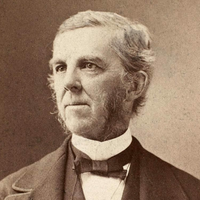
Oliver Wendell Holmes (August 29, 1809 – October 7, 1894) was an American physician, poet, and polymath based in Boston. Grouped among the fireside poets, he was acclaimed by his peers as one of the best writers of the day. His most famous prose works are the "Breakfast-Table" series, which began with The Autocrat of the Breakfast-Table (1858). He was also an important medical reformer. In addition to his work as an author and poet, Holmes also served as a physician, professor, lecturer, inventor, and, although he never practiced it, he received formal training in law.

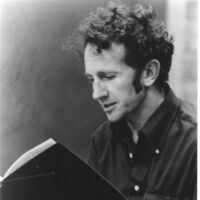
Philip Levine (January 10, 1928– February 14, 2015) was a Pulitzer Prize-winning American poet best known for his poems about working-class Detroit. He taught for more than thirty years in the English department of California State University, Fresno and held teaching positions at other universities as well. He served on the Board of Chancellors of the Academy of American Poets from 2000 to 2006, and was appointed Poet Laureate of the United States for 2011–2012. Biography Philip Levine grew up in industrial Detroit, the second of three sons and the first of identical twins of Jewish immigrant parents. His father, Harry Levine, owned a used auto parts business, his mother, Esther Priscol (Prisckulnick) Levine, was a bookseller. When Levine was five years old, his father died. While growing up, he faced the anti-Semitism embodied by Father Coughlin, the pro-Nazi radio priest. Levine started to work in car manufacturing plants at the age of 14. Detroit Central High School graduated him in 1946 and he went to college at Wayne University (now Wayne State University) in Detroit, where he began to write poetry, encouraged by his mother, to whom he dedicated the book of poems, The Mercy. Levine earned his A.B. in 1950 and went to work for Chevrolet and Cadillac in what he called “stupid jobs.” He married his first wife, Patty Kanterman, in 1951. The marriage lasted until 1953. In 1953, he attended the University of Iowa without registering, studying with, among others, poets Robert Lowell and John Berryman, the latter of whom Levine called his “one great mentor.” In 1954, he earned a mail-order masters degree with a thesis on John Keats’ “Ode to Indolence,” and married actress Frances J. Artley. He returned to the University of Iowa teaching technical writing, completing his Master of Fine Arts degree in 1957. The same year, he was awarded the Jones Fellowship in Poetry at Stanford University. In 1958, he joined the English department at California State University in Fresno, where he taught until his retirement in 1992. He also taught at many other universities, among them New York University as Distinguished Writer-in-Residence, Columbia, Princeton, Brown, Tufts, and the University of California at Berkeley. Levine and his wife had made their homes in Fresno and Brooklyn. He died of pancreatic cancer on February 14, 2015, age 87. Work The familial, social, and economic world of twentieth-century Detroit is one of the major subjects of Levine’s life work. His portraits of working class Americans and his continuous examination of his Jewish immigrant inheritance (both based on real life and described through fictional characters) has left a testimony of mid-twentieth century American life. Levine’s working experience lent his poetry a profound skepticism with regard to conventional American ideals. In his first two books, On the Edge (1963) and Not This Pig (1968), the poetry dwells on those who suddenly become aware that they are trapped in some murderous processes not of their own making. In 1968, Levine signed the “Writers and Editors War Tax Protest” pledge, vowing to refuse to make tax payments in protest against the Vietnam War. In his first two books, Levine was somewhat traditional in form and relatively constrained in expression. Beginning with They Feed They Lion, typically Levine’s poems are free-verse monologues tending toward trimeter or tetrameter. The music of Levine’s poetry depends on tension between his line-breaks and his syntax. The title poem of Levine’s book 1933 (1974) is an example of the cascade of clauses and phrases one finds in his poetry. Other collections include The Names of the Lost, A Walk with Tom Jefferson, New Selected Poems, and the National Book Award-winning What Work Is. On November 29, 2007 a tribute was held in New York City in anticipation of Levine’s eightieth birthday. Among those celebrating Levine’s career by reading Levine’s work were Yusef Komunyakaa, Galway Kinnell, E. L. Doctorow, Charles Wright, Jean Valentine and Sharon Olds. Levine read several new poems as well. Awards * 2013 Academy of American Poets Wallace Stevens Award * 2011 Appointed Poet Laureate Consultant in Poetry to the Library of Congress (United States Poet Laureate) * 1995 Pulitzer Prize for Poetry– The Simple Truth (1994) * 1991 National Book Award for Poetry and Los Angeles Times Book Prize– What Work Is * 1987 Ruth Lilly Poetry Prize from the Modern Poetry Association and the American Council for the Arts * 1981 Levinson Prize from Poetry magazine * 1980 Guggenheim Foundation fellowship * 1980 National Book Award for Poetry– Ashes: Poems New and Old * 1979 National Book Critics Circle Award– Ashes: Poems New and Old– 7 Years from Somewhere * 1978 Harriet Monroe Memorial Prize from Poetry * 1977 Lenore Marshall Poetry Prize from the Academy of American Poets– The Names of the Lost (1975) * 1973 American Academy of Arts and Letters Award, Frank O’Hara Prize, Guggenheim Foundation fellowship Published works Poetry collections * News of the World, Random House, Inc., 2009, ISBN 978-0-307-27223-2 * Stranger to Nothing: Selected Poems, Bloodaxe Books, UK, 2006, ISBN 978-1-85224-737-9 * Breath Knopf, 2004, ISBN 978-1-4000-4291-3; reprint, Random House, Inc., 2006, ISBN 978-0-375-71078-0 * The Mercy, Random House, Inc., 1999, ISBN 978-0-375-70135-1 * Unselected Poems, Greenhouse Review Press, 1997, ISBN 978-0-9655239-0-5 * The Simple Truth, Alfred A. Knopf, 1994, ISBN 978-0-679-43580-8; Alfred A. Knopf, 1996, ISBN 978-0-679-76584-4 * What Work Is, Knopf, 1992, ISBN 978-0-679-74058-2 * New Selected Poems, Knopf, 1991, ISBN 978-0-679-40165-0 * A Walk With Tom Jefferson, A.A. Knopf, 1988, ISBN 978-0-394-57038-9 * Sweet Will, Atheneum, 1985, ISBN 978-0-689-11585-1 * Selected Poems, Atheneum, 1984, ISBN 978-0-689-11456-4 * One for the Rose, Atheneum, 1981, ISBN 978-0-689-11223-2 * 7 Years From Somewhere, Atheneum, 1979, ISBN 978-0-689-10974-4 * Ashes: Poems New and Old, Atheneum, 1979, ISBN 978-0-689-10975-1 * The Names of the Lost, Atheneum, 1976 * 1933, Atheneum, 1974, ISBN 978-0-689-10586-9 * They Feed They Lion, Atheneum, 1972 * Red Dust (1971) * Pili’s Wall, Unicorn Press, 1971; Unicorn Press, 1980 * Not This Pig, Wesleyan University Press, 1968, ISBN 978-0-8195-2038-8; Wesleyan University Press, 1982, ISBN 978-0-8195-1038-9 * On the Edge (1963) Essays * The Bread of Time (1994) Translations * Off the Map: Selected Poems of Gloria Fuertes, edited and translated with Ada Long (1984) * Tarumba: The Selected Poems of Jaime Sabines, edited and translated with Ernesto Trejo (1979) Interviews * Don’t Ask, University of Michigan Press, 1981, ISBN 978-0-472-06327-7 * Moyers & Company, on December 29, 2013, Philip Levine reads some of his poetry and explores how his years working on Detroit’s assembly lines inspired his poetry. * “Interlochen Center for the Arts”, Interview with Interlochen Arts Academy students on March 17, 1977. References Wikipedia—https://en.wikipedia.org/wiki/Philip_Levine_(poet)
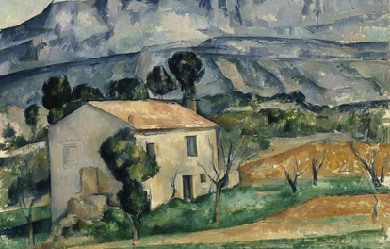
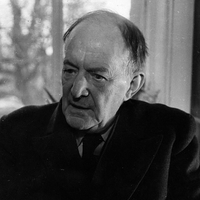
Walter John de la Mare (25 April 1873– 22 June 1956) was an English poet, short story writer and novelist. He is probably best remembered for his works for children, for his poem “The Listeners”, and for subtle psychological horror stories, amongst them “Seaton’s Aunt” and “Out of the Deep”. His 1921 novel Memoirs of a Midget won the James Tait Black Memorial Prize for fiction, and his post-war Collected Stories for Children won the 1947 Carnegie Medal for British children’s books.
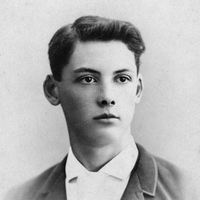
Edwin Arlington Robinson (December 22, 1869—April 6, 1935) was an American poet who won three Pulitzer Prizes for his work. He was born in Head Tide, Lincoln County, Maine but his family moved to Gardiner, Maine in 1871. He described his childhood in Maine as “stark and unhappy”: His parents (who had wanted a girl) did not name him until he was six months old, when they visited a holiday resort—whereupon, other vacationers decided that he should have a name and selected a man from Arlington, Massachusetts to draw a name out of a hat. Throughout his life, he not only hated his given name, but also his family’s habit of calling him “Win.” As an adult, he always used the signature “E. A.”
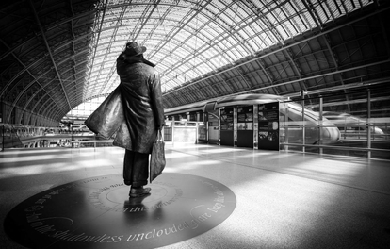
Sir John Betjeman, CBE (28 August 1906 – 19 May 1984) was an English poet, writer, and broadcaster who described himself in Who’s Who as a “poet and hack”. He was Poet Laureate of the United Kingdom from 1972 until his death. He was a founding member of the Victorian Society and a passionate defender of Victorian architecture. He began his career as a journalist and ended it as one of the most popular British Poets Laureate and a much-loved figure on British television.
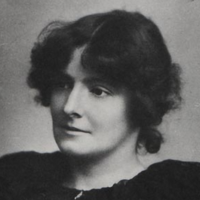
Edith Nesbit (married name Edith Bland; 15 August 1858 – 4 May 1924) was an English author and poet; she published her books for children under the name of E. Nesbit. She wrote or collaborated on more than 60 books of fiction for children. She was also a political activist and co-founded the Fabian Society, a socialist organisation later affiliated to the Labour Party.

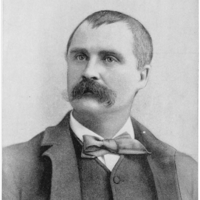
John Boyle O’Reilly (28 June 1844–10 August 1890) was an Irish-born poet, journalist and fiction writer. As a youth in Ireland, he was a member of the Irish Republican Brotherhood, or Fenians, for which he was transported to Western Australia. After escaping to the United States, he became a prominent spokesperson for the Irish community and culture, through his editorship of the Boston newspaper The Pilot, his prolific writing, and his lecture tours.

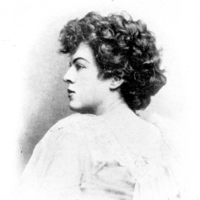
Dora Maria Sigerson Shorter (16 August 1866– 6 January 1918) was an Irish poet and sculptor, who after her marriage in 1895 wrote under the name Dora Sigerson Shorter. She was born in Dublin, Ireland, the daughter of George Sigerson, a surgeon and writer, and Hester (née Varian), also a writer. She was a major figure of the Irish Literary Revival, publishing many collections of poetry from 1893. Her friends included Katharine Tynan, Rose Kavanagh and Alice Furlong, writers and poets. In 1895 she married Clement King Shorter, an English journalist and literary critic. They lived together in London, until her death at age 51 from undisclosed causes.
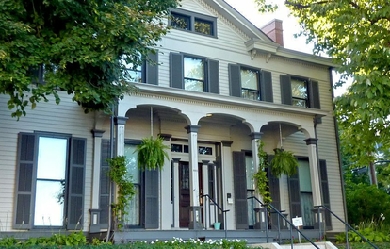
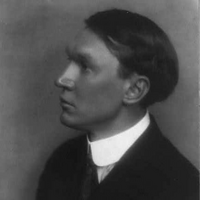
Nicholas Vachel Lindsay (November 10, 1879– December 5, 1931) was an American poet. He is considered a founder of modern singing poetry, as he referred to it, in which verses are meant to be sung or chanted. Crushed by financial worry and in failing health from his six-month road trip, Lindsay sank into depression. While in New York in 1905 Lindsay turned to poetry in earnest. He tried to sell his poems on the streets. Self-printing his poems, he began to barter a pamphlet titled “Rhymes To Be Traded For Bread”, which he traded for food as a self-perceived modern version of a medieval troubadour. On December 5, 1931, he committed suicide by drinking a bottle of Lysol. His last words were: “They tried to get me; I got them first!”


Sir Walter Scott, 1st Baronet, FRSE (15 August 1771– 21 September 1832) was a Scottish historical novelist, playwright and poet with many contemporary readers in Europe, Australia, and North America. Scott’s novels and poetry are still read, and many of his works remain classics of both English-language literature and of Scottish literature. Famous titles include Ivanhoe, Rob Roy, Old Mortality, The Lady of the Lake, Waverley, The Heart of Midlothian and The Bride of Lammermoor.
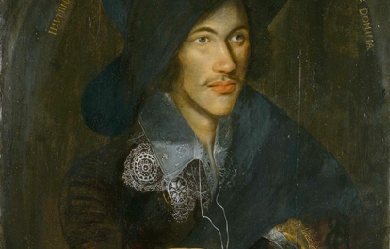

John Donne (between 24 January and 19 June 1572 – 31 March 1631) was an English poet, satirist, lawyer and priest. He is considered the pre-eminent representative of the metaphysical poets. His works are noted for their strong, sensual style and include sonnets, love poetry, religious poems, Latin translations, epigrams, elegies, songs, satires and sermons. His poetry is noted for its vibrancy of language and inventiveness of metaphor, especially compared to that of his contemporaries. Donne's style is characterised by abrupt openings and various paradoxes, ironies and dislocations. These features, along with his frequent dramatic or everyday speech rhythms, his tense syntax and his tough eloquence, were both a reaction against the smoothness of conventional Elizabethan poetry and an adaptation into English of European baroque and mannerist techniques. His early career was marked by poetry that bore immense knowledge of British society and he met that knowledge with sharp criticism. Another important theme in Donne’s poetry is the idea of true religion, something that he spent much time considering and theorising about. He wrote secular poems as well as erotic and love poems. He is particularly famous for his mastery of metaphysical conceits.


Clive Staples Lewis (29 November 1898 – 22 November 1963), commonly called C. S. Lewis and known to his friends and family as “Jack”, was a novelist, poet, academic, medievalist, literary critic, essayist, lay theologian, and Christian apologist. Born in Belfast, Ireland, he held academic positions at both Oxford University (Magdalen College), 1925–1954, and Cambridge University (Magdalene College), 1954–1963. He is best known both for his fictional work, especially The Screwtape Letters, The Chronicles of Narnia, and The Space Trilogy, and for his non-fiction Christian apologetics, such as Mere Christianity, Miracles, and The Problem of Pain. Lewis and fellow novelist J. R. R. Tolkien were close friends. Both authors served on the English faculty at Oxford University, and both were active in the informal Oxford literary group known as the “Inklings”. According to his memoir Surprised by Joy, Lewis had been baptized in the Church of Ireland (part of the Anglican Communion) at birth, but fell away from his faith during his adolescence. Owing to the influence of Tolkien and other friends, at the age of 32 Lewis returned to the Anglican Communion, becoming “a very ordinary layman of the Church of England”. His faith had a profound effect on his work, and his wartime radio broadcasts on the subject of Christianity brought him wide acclaim.


Louise Elisabeth Glück (born April 22, 1943) is an American poet. She was appointed Poet Laureate Consultant in Poetry to the Library of Congress in 2003. Louise was born in New York City of Hungarian Jewish heritage and grew up on Long Island. Her father, Daniel, an immigrant from Hungary, helped invent and market the X-Acto Knife. She graduated in 1961 from George W. Hewlett High School and went on to attend Sarah Lawrence College and later Columbia University; however, she did not graduate from either of them. Glück won the Pulitzer Prize for Poetry in 1993 for her collection The Wild Iris.


Edgar Lee Masters (August 23, 1868– March 5, 1950) was an American attorney, poet, biographer, and dramatist. He is the author of Spoon River Anthology, The New Star Chamber and Other Essays, Songs and Satires, The Great Valley, The Serpent in the Wilderness An Obscure Tale, The Spleen, Mark Twain: A Portrait, Lincoln: The Man, and Illinois Poems. In all, Masters published twelve plays, twenty-one books of poetry, six novels and six biographies, including those of Abraham Lincoln, Mark Twain, Vachel Lindsay, and Walt Whitman. Life and career Born in Garnett, Kansas to attorney Hardin Wallace Masters and Emma J. Dexter, his father had briefly moved to set up a law practice, then soon moved back to his paternal grandparents’ farm near Petersburg in Menard County, Illinois. In 1880 they moved to Lewistown, Illinois, where he attended high school and had his first publication in the Chicago Daily News. The culture around Lewistown, in addition to the town’s cemetery at Oak Hill, and the nearby Spoon River were the inspirations for many of his works, most notably Spoon River Anthology, his most famous and acclaimed work. He attended Knox Academy in 1889–90, a now defunct preparatory program run by Knox College, but was forced to leave due to his family’s inability to finance his education. After working in his father’s law office, he was admitted to the Illinois bar and moved to Chicago, where he established a law partnership in 1893 with the law firm of Kickham Scanlan. He married twice. In 1898 he married Helen M. Jenkins, the daughter of Robert Edwin Jenkins, a lawyer in Chicago, and had three children. During his law partnership with Clarence Darrow from 1903 to 1908, Masters defended the poor. In 1911 he started his own law firm, despite three years of unrest (1908–11) caused by extramarital affairs and an argument with Darrow. Two of his children followed him with literary careers. His daughter Marcia pursued poetry, while his son Hilary Masters became a novelist. Hilary and his half-brother Hardin wrote a memoir of their father. Masters died at a nursing home on March 5, 1950, in Melrose Park, Pennsylvania, age 81. He is buried in Oakland cemetery in Petersburg, Illinois. His epitaph includes his poem, “To-morrow is My Birthday” from Toward the Gulf (1918): Good friends, let’s to the fields…After a little walk and by your pardon, I think I’ll sleep, there is no sweeter thing.Nor fate more blessed than to sleep. I am a dream out of a blessed sleep-Let’s walk, and hear the lark. Family history Edgar’s father was Hardin Wallace Masters, whose father was Squire Davis Masters, whose father was Thomas Masters, whose father was Hillery Masters, the son of Robert Masters (born c. 1715, Prince George’s County, Maryland, the son of William W. Masters and wife Mary Veatch Masters). Edgar Lee Masters wrote in his autobiography, Across Spoon River (1936), that his ancestor Hillery Masters was the son of “Knotteley” Masters, but family genealogies show that Hillery and Notley Masters were, in fact, brothers. Poetry Masters first published his early poems and essays under the pseudonym Dexter Wallace (after his mother’s maiden name and his father’s middle name) until the year 1903, when he joined the law firm of Clarence Darrow. Masters began developing as a notable American poet in 1914, when he began a series of poems (this time under the pseudonym Webster Ford) about his childhood experiences in Western Illinois, which appeared in Reedy’s Mirror, a St. Louis publication. In 1915 the series was bound into a volume and re-titled Spoon River Anthology. Years later, he wrote a memorable and invaluable account of the book’s background and genesis, his working methods and influences, as well as its reception by the critics, favorable and hostile, in an autobiographical article notable for its human warmth and general interest. Although he never matched the success of his Spoon River Anthology, he did publish several other volumes of poems including Book of Verses in 1898, Songs and Sonnets in 1910, The Great Valley in 1916, Song and Satires in 1916, The Open Sea in 1921, The New Spoon River in 1924, Lee in 1926, Jack Kelso in 1928, Lichee Nuts in 1930, Gettysburg, Manila, Acoma in 1930, Godbey, sequel to Jack Kelso in 1931, The Serpent in the Wilderness in 1933, Richmond in 1934, Invisible Landscapes in 1935, The Golden Fleece of California in 1936, Poems of People in 1936, The New World in 1937, More People in 1939, Illinois Poems in 1941, and Along the Illinois in 1942. Lincoln: the Man In 1931 Masters published the biography Lincoln: the Man, which demythologizes Abraham Lincoln, portraying him as a tool of bankers wanting a new Bank of the United States, “that political system which doles favors to the strong in order to win and keep their adherence to the government”, and advocates “a people taxed to make profits for enterprises that cannot stand alone”. He claimed the Whig Party led by Lincoln’s mentor Henry Clay “had no platform to announce because its principles were plunder and nothing else.” Quotations from the book: “The political history of America has been written for the most part by those who were unfriendly to the theory of a confederated republic, or who did not understand it. It has been written by devotees of the protective principle [tariff], by centralists, and to a large degree by New England.” “For in six weeks he was to inaugurate a war without the American people having anything to say about it. He was to call for and send troops into the South, and thus stir that psychology of hate and fear from which a people cannot extricate themselves, though knowing and saying that the war was started by usurpation. Did he mean that he would bow to the American people when the law was laid down by their courts, through which alone the law be interpreted as the Constitutional voice of the people? No, he did not mean that; because when Taney decided that Lincoln had no power to suspend the writ of habeas corpus, Lincoln flouted and trampled the decision of the court.” “The War between the States demonstrated that salvation is not of the Jews, but of the Greeks. The World War added to this proof; for Wilson did many things that Lincoln did, and with Lincoln as authority for doing them. Perhaps it will happen again that a few men, deciding what is a cause of war, and what is necessary to its successful prosecution, may, as Lincoln and Wilson did, seal the lips of discussion and shackle the press; but no less the ideal of a just state, which has founded itself in reason and in free speech, will remain.” Notable works Poetry * A Book of Verses (1898) * Songs and Sonnets (1910) * Spoon River Anthology (1915) * Songs and Satires (1916) * Fiddler Jones (1916) * The Great Valley (New York: Macmillan Co., 1916) * Toward the Gulf (New York: Macmillan Co., 1918) * Starved Rock (New York: Macmillan Co., 1919) * Jack Kelso: A Dramatic Poem (1920) * Domesday Book (New York: Macmillan Co., 1920) * The Open Sea (New York: Macmillan Co., 1921) * The New Spoon River (New York: Macmillan Co., 1924) * Selected Poems (1925) * Lichee-Nut Poems (American Mercury, Jan. 1925) * Lee: A Dramatic Poem (1926) * Godbey: A Dramatic Poem (1931), sequel to Jack Kelso (1920) * The Serpent in the Wilderness (1933) * Richmond: A Dramatic Poem (1934) * Invisible Landscapes (1935) * Poems of People (1936) * The Golden Fleece of California (1936) (poetic narrative) * The New World (1937) * More People (1939) * Illinois Poems (1941) * Along the Illinois (1942) * Silence (1946) * George Gray * Many Soldiers * The Unknown Biographies * Children of the Market Place: A Fictitious Autobiography (New York: Macmillan Co., 1922). Life of Stephen Douglas. * Levy Mayer and the New Industrial Era (New Haven: Yale University Press, 1927). Chicago attorney Levy Mayer (1858-1922). * Lincoln: The Man (1931) * Vachel Lindsay: A Poet in America (1935) * Across Spoon River: An Autobiography (memoir) (1936) * Whitman (1937) * Mark Twain: A Portrait (1938) Books * The New Star Chamber and Other Essays (1904) * The Blood of the Prophets (1905) (play) * Althea (1907) (play) * The Trifler (1908) (play) * Mitch Miller (novel) (1920) * Skeeters Kirby (novel) (1923) * The Nuptial Flight (novel) (1923) * Kit O’Brien (novel) (1927) * The Fate of the Jury: An Epilogue to Domesday Book (1929) * Gettysburg, Manila, Acoma: Three Plays (1930) * The Tale of Chicago (1933) * The Tide of Time (novel) (1937) * The Sangamon (Chicago: University of Illinois Press, 1942, 1988) Awards & honors Masters was awarded the Mark Twain Silver Medal in 1936, the Poetry Society of America medal in 1941, the Academy of American Poets Fellowship in 1942, and the Shelly Memorial Award in 1944. In 2014, he was inducted into the Chicago Literary Hall of Fame. References Wikipedia—https://en.wikipedia.org/wiki/Edgar_Lee_Masters


Nathaniel Hawthorne (July 4, 1804 – May 19, 1864) was an American novelist, dark romantic, and short story writer. He was born in 1804 in Salem, Massachusetts to Nathaniel Hathorne and the former Elizabeth Clarke Manning. His ancestors include John Hathorne, the only judge involved in the Salem witch trials who never repented of his actions. He entered Bowdoin College in 1821, was elected to Phi Beta Kappa in 1824, and graduated in 1825. He published his first work in 1828, the novel Fanshawe; he later tried to suppress it, feeling that it was not equal to the standard of his later work. He published several short stories in periodicals, which he collected in 1837 as Twice-Told Tales. The next year, he became engaged to Sophia Peabody. He worked at the Boston Custom House and joined Brook Farm, a transcendentalist community, before marrying Peabody in 1842. The couple moved to The Old Manse in Concord, Massachusetts, later moving to Salem, the Berkshires, then to The Wayside in Concord. The Scarlet Letter was published in 1850, followed by a succession of other novels. A political appointment as consul took Hawthorne and family to Europe before their return to Concord in 1860. Hawthorne died on May 19, 1864, and was survived by his wife and their three children. Much of Hawthorne’s writing centers on New England, many works featuring moral metaphors with an anti-Puritan inspiration. His fiction works are considered part of the Romantic movement and, more specifically, dark romanticism. His themes often center on the inherent evil and sin of humanity, and his works often have moral messages and deep psychological complexity. His published works include novels, short stories, and a biography of his college friend Franklin Pierce, the 14th President of the United States. Biography Early life Nathaniel Hawthorne was born on July 4, 1804, in Salem, Massachusetts; his birthplace is preserved and open to the public. William Hathorne was the author’s great-great-great-grandfather. He was a Puritan and was the first of the family to emigrate from England, settling in Dorchester, Massachusetts before moving to Salem. There he became an important member of the Massachusetts Bay Colony and held many political positions, including magistrate and judge, becoming infamous for his harsh sentencing. William’s son and the author’s great-great-grandfather John Hathorne was one of the judges who oversaw the Salem witch trials. Hawthorne probably added the “w” to his surname in his early twenties, shortly after graduating from college, in an effort to dissociate himself from his notorious forebears. Hawthorne’s father Nathaniel Hathorne, Sr. was a sea captain who died in 1808 of yellow fever in Suriname; he had been a member of the East India Marine Society. After his death, his widow moved with young Nathaniel and two daughters to live with relatives named the Mannings in Salem, where they lived for 10 years. Young Hawthorne was hit on the leg while playing “bat and ball” on November 10, 1813, and he became lame and bedridden for a year, though several physicians could find nothing wrong with him. In the summer of 1816, the family lived as boarders with farmers before moving to a home recently built specifically for them by Hawthorne’s uncles Richard and Robert Manning in Raymond, Maine, near Sebago Lake. Years later, Hawthorne looked back at his time in Maine fondly: “Those were delightful days, for that part of the country was wild then, with only scattered clearings, and nine tenths of it primeval woods.” In 1819, he was sent back to Salem for school and soon complained of homesickness and being too far from his mother and sisters. He distributed seven issues of The Spectator to his family in August and September 1820 for the sake of having fun. The homemade newspaper was written by hand and included essays, poems, and news featuring the young author’s adolescent humor. Hawthorne’s uncle Robert Manning insisted that the boy attend college, despite Hawthorne’s protests. With the financial support of his uncle, Hawthorne was sent to Bowdoin College in 1821, partly because of family connections in the area, and also because of its relatively inexpensive tuition rate. Hawthorne met future president Franklin Pierce on the way to Bowdoin, at the stage stop in Portland, and the two became fast friends. Once at the school, he also met future poet Henry Wadsworth Longfellow, future congressman Jonathan Cilley, and future naval reformer Horatio Bridge. He graduated with the class of 1825, and later described his college experience to Richard Henry Stoddard: I was educated (as the phrase is) at Bowdoin College. I was an idle student, negligent of college rules and the Procrustean details of academic life, rather choosing to nurse my own fancies than to dig into Greek roots and be numbered among the learned Thebans. Early career In 1836, Hawthorne served as the editor of the American Magazine of Useful and Entertaining Knowledge. At the time, he boarded with poet Thomas Green Fessenden on Hancock Street in Beacon Hill in Boston. He was offered an appointment as weigher and gauger at the Boston Custom House at a salary of $1,500 a year, which he accepted on January 17, 1839. During his time there, he rented a room from George Stillman Hillard, business partner of Charles Sumner. Hawthorne wrote in the comparative obscurity of what he called his “owl’s nest” in the family home. As he looked back on this period of his life, he wrote: “I have not lived, but only dreamed about living.” He contributed short stories to various magazines and annuals, including “Young Goodman Brown” and “The Minister’s Black Veil”, though none drew major attention to him. Horatio Bridge offered to cover the risk of collecting these stories in the spring of 1837 into the volume Twice-Told Tales, which made Hawthorne known locally. Marriage and family While at Bowdoin, Hawthorne wagered a bottle of Madeira wine with his friend Jonathan Cilley that Cilley would get married before Hawthorne did. By 1836, he had won the bet, but he did not remain a bachelor for life. He had public flirtations with Mary Silsbee and Elizabeth Peabody, then he began pursuing Peabody’s sister, illustrator and transcendentalist Sophia Peabody. He joined the transcendentalist Utopian community at Brook Farm in 1841, not because he agreed with the experiment but because it helped him save money to marry Sophia. He paid a $1,000 deposit and was put in charge of shoveling the hill of manure referred to as “the Gold Mine”. He left later that year, though his Brook Farm adventure became an inspiration for his novel The Blithedale Romance. Hawthorne married Sophia Peabody on July 9, 1842 at a ceremony in the Peabody parlor on West Street in Boston. The couple moved to The Old Manse in Concord, Massachusetts, where they lived for three years. His neighbor Ralph Waldo Emerson invited him into his social circle, but Hawthorne was almost pathologically shy and stayed silent at gatherings. At the Old Manse, Hawthorne wrote most of the tales collected in Mosses from an Old Manse. Like Hawthorne, Sophia was a reclusive person. Throughout her early life, she had frequent migraines and underwent several experimental medical treatments. She was mostly bedridden until her sister introduced her to Hawthorne, after which her headaches seem to have abated. The Hawthornes enjoyed a long and happy marriage. He referred to her as his “Dove” and wrote that she “is, in the strictest sense, my sole companion; and I need no other—there is no vacancy in my mind, any more than in my heart... Thank God that I suffice for her boundless heart!” Sophia greatly admired her husband’s work. She wrote in one of her journals: I am always so dazzled and bewildered with the richness, the depth, the... jewels of beauty in his productions that I am always looking forward to a second reading where I can ponder and muse and fully take in the miraculous wealth of thoughts. Poet Ellery Channing came to the Old Manse for help on the first anniversary of the Hawthornes’ marriage. A local teenager named Martha Hunt had drowned herself in the river and Hawthorne’s boat Pond Lily was needed to find her body. Hawthorne helped recover the corpse, which he described as “a spectacle of such perfect horror... She was the very image of death-agony”. The incident later inspired a scene in his novel The Blithedale Romance. The Hawthornes had three children. Their first was daughter Una, born March 3, 1844; her name was a reference to The Faerie Queene, to the displeasure of family members. Hawthorne wrote to a friend, “I find it a very sober and serious kind of happiness that springs from the birth of a child... There is no escaping it any longer. I have business on earth now, and must look about me for the means of doing it.” In October 1845, the Hawthornes moved to Salem. In 1846, their son Julian was born. Hawthorne wrote to his sister Louisa on June 22, 1846: “A small troglodyte made his appearance here at ten minutes to six o’clock this morning, who claimed to be your nephew.” Daughter Rose was born in May 1851, and Hawthorne called her his “autumnal flower”. Middle years In April 1846, Hawthorne was officially appointed as the “Surveyor for the District of Salem and Beverly and Inspector of the Revenue for the Port of Salem” at an annual salary of $1,200. He had difficulty writing during this period, as he admitted to Longfellow: I am trying to resume my pen... Whenever I sit alone, or walk alone, I find myself dreaming about stories, as of old; but these forenoons in the Custom House undo all that the afternoons and evenings have done. I should be happier if I could write. This employment, like his earlier appointment to the custom house in Boston, was vulnerable to the politics of the spoils system. Hawthorne was a Democrat and lost this job due to the change of administration in Washington after the presidential election of 1848. He wrote a letter of protest to the Boston Daily Advertiser which was attacked by the Whigs and supported by the Democrats, making Hawthorne’s dismissal a much-talked about event in New England. He was deeply affected by the death of his mother in late July, calling it “the darkest hour I ever lived”. He was appointed the corresponding secretary of the Salem Lyceum in 1848. Guests who came to speak that season included Emerson, Thoreau, Louis Agassiz, and Theodore Parker. Hawthorne returned to writing and published The Scarlet Letter in mid-March 1850, including a preface that refers to his three-year tenure in the Custom House and makes several allusions to local politicians—who did not appreciate their treatment. It was one of the first mass-produced books in America, selling 2,500 volumes within ten days and earning Hawthorne $1,500 over 14 years. The book was pirated by booksellers in London and became a best-seller in the United States; it initiated his most lucrative period as a writer. Hawthorne’s friend Edwin Percy Whipple objected to the novel’s “morbid intensity” and its dense psychological details, writing that the book “is therefore apt to become, like Hawthorne, too painfully anatomical in his exhibition of them”, though 20th-century writer D. H. Lawrence said that there could be no more perfect work of the American imagination than The Scarlet Letter. Hawthorne and his family moved to a small red farmhouse near Lenox, Massachusetts at the end of March 1850. He became friends with Herman Melville beginning on August 5, 1850 when the authors met at a picnic hosted by a mutual friend. Melville had just read Hawthorne’s short story collection Mosses from an Old Manse, and his unsigned review of the collection was printed in The Literary World on August 17 and August 24 entitled “Hawthorne and His Mosses”. Melville was composing Moby-Dick at the time, and he wrote that these stories revealed a dark side to Hawthorne, “shrouded in blackness, ten times black”. Melville dedicated Moby-Dick (1851) to Hawthorne: “In token of my admiration for his genius, this book is inscribed to Nathaniel Hawthorne.” Hawthorne’s time in the Berkshires was very productive. While there, he wrote The House of the Seven Gables (1851), which poet and critic James Russell Lowell said was better than The Scarlet Letter and called “the most valuable contribution to New England history that has been made.” He also wrote The Blithedale Romance (1852), his only work written in the first person. He also published A Wonder-Book for Girls and Boys in 1851, a collection of short stories retelling myths which he had been thinking about writing since 1846. Nevertheless, poet Ellery Channing reported that Hawthorne “has suffered much living in this place”. The family enjoyed the scenery of the Berkshires, although Hawthorne did not enjoy the winters in their small house. They left on November 21, 1851. Hawthorne noted, “I am sick to death of Berkshire... I have felt languid and dispirited, during almost my whole residence.” The Wayside and Europe In May 1852, the Hawthornes returned to Concord where they lived until July 1853. In February, they bought The Hillside, a home previously inhabited by Amos Bronson Alcott and his family, and renamed it The Wayside. Their neighbors in Concord included Emerson and Henry David Thoreau. That year, Hawthorne wrote The Life of Franklin Pierce, the campaign biography of his friend which depicted him as “a man of peaceful pursuits”. Horace Mann said, “If he makes out Pierce to be a great man or a brave man, it will be the greatest work of fiction he ever wrote.” In the biography, Hawthorne depicts Pierce as a statesman and soldier who had accomplished no great feats because of his need to make “little noise” and so “withdrew into the background”. He also left out Pierce’s drinking habits, despite rumors of his alcoholism, and emphasized Pierce’s belief that slavery could not “be remedied by human contrivances” but would, over time, “vanish like a dream”. With Pierce’s election as President, Hawthorne was rewarded in 1853 with the position of United States consul in Liverpool shortly after the publication of Tanglewood Tales. The role was considered the most lucrative foreign service position at the time, described by Hawthorne’s wife as “second in dignity to the Embassy in London”. His appointment ended in 1857 at the close of the Pierce administration, and the Hawthorne family toured France and Italy. During his time in Italy, the previously clean-shaven Hawthorne grew a bushy mustache. The family returned to The Wayside in 1860, and that year saw the publication of The Marble Faun, his first new book in seven years. Hawthorne admitted that he had aged considerably, referring to himself as “wrinkled with time and trouble”. Later years and death At the outset of the American Civil War, Hawthorne traveled with William D. Ticknor to Washington, D.C. where he met Abraham Lincoln and other notable figures. He wrote about his experiences in the essay “Chiefly About War Matters” in 1862. Failing health prevented him from completing several more romances. Hawthorne was suffering from pain in his stomach and insisted on a recuperative trip with his friend Franklin Pierce, though his neighbor Bronson Alcott was concerned that Hawthorne was too ill. While on a tour of the White Mountains, he died in his sleep on May 19, 1864 in Plymouth, New Hampshire. Pierce sent a telegram to Elizabeth Peabody asking her to inform Mrs. Hawthorne in person. Mrs. Hawthorne was too saddened by the news to handle the funeral arrangements herself. Hawthorne’s son Julian was a freshman at Harvard College, and he learned of his father’s death the next day; coincidentally, he was initiated into the Delta Kappa Epsilon fraternity on the same day by being blindfolded and placed in a coffin. Longfellow wrote a tribute poem to Hawthorne published in 1866 called “The Bells of Lynn”. Hawthorne was buried on what is now known as “Authors’ Ridge” in Sleepy Hollow Cemetery, Concord, Massachusetts. Pallbearers included Longfellow, Emerson, Alcott, Oliver Wendell Holmes Sr., James Thomas Fields, and Edwin Percy Whipple. Emerson wrote of the funeral: "I thought there was a tragic element in the event, that might be more fully rendered—in the painful solitude of the man, which, I suppose, could no longer be endured, & he died of it.” His wife Sophia and daughter Una were originally buried in England. However, in June 2006, they were reinterred in plots adjacent to Hawthorne. Writings Hawthorne had a particularly close relationship with his publishers William Ticknor and James Thomas Fields. Hawthorne once told Fields, “I care more for your good opinion than for that of a host of critics.” In fact, it was Fields who convinced Hawthorne to turn The Scarlet Letter into a novel rather than a short story. Ticknor handled many of Hawthorne’s personal matters, including the purchase of cigars, overseeing financial accounts, and even purchasing clothes. Ticknor died with Hawthorne at his side in Philadelphia in 1864; according to a friend, Hawthorne was left “apparently dazed”. Literary style and themes Hawthorne’s works belong to romanticism or, more specifically, dark romanticism, cautionary tales that suggest that guilt, sin, and evil are the most inherent natural qualities of humanity. Many of his works are inspired by Puritan New England, combining historical romance loaded with symbolism and deep psychological themes, bordering on surrealism. His depictions of the past are a version of historical fiction used only as a vehicle to express common themes of ancestral sin, guilt and retribution. His later writings also reflect his negative view of the Transcendentalism movement. Hawthorne was predominantly a short story writer in his early career. Upon publishing Twice-Told Tales, however, he noted, “I do not think much of them,” and he expected little response from the public. His four major romances were written between 1850 and 1860: The Scarlet Letter (1850), The House of the Seven Gables (1851), The Blithedale Romance (1852) and The Marble Faun (1860). Another novel-length romance, Fanshawe, was published anonymously in 1828. Hawthorne defined a romance as being radically different from a novel by not being concerned with the possible or probable course of ordinary experience. In the preface to The House of the Seven Gables, Hawthorne describes his romance-writing as using “atmospherical medium as to bring out or mellow the lights and deepen and enrich the shadows of the picture”. Critics have applied feminist perspectives and historicist approaches to Hawthorne’s depictions of women. Feminist scholars are interested particularly in Hester Prynne, who realized that she herself could not be the “destined prophetess,” but that “angel and apostle of the coming revelation” must be a woman." Camille Paglia saw Hester as mystical, “a wandering goddess still bearing the mark of her Asiatic origins... moving serenely in the magic circle of her sexual nature”. Lauren Berlant termed Hester "the citizen as woman [personifying] love as a quality of the body that contains the purest light of nature," her resulting “traitorous political theory” a “Female Symbolic” literalization of futile Puritan metaphors. Historicists view Hester as a protofeminist and avatar of the self-reliance and responsibility that led to women’s suffrage and reproductive emancipation. Anthony Splendora found her literary genealogy among other archetypally fallen but redeemed women, both historic and mythic. As examples, he offers Psyche of ancient legend; Heloise of twelfth-century France’s tragedy involving world-renowned philosopher Peter Abelard; Anne Hutchinson (America’s first heretic, circa 1636), and Hawthorne family friend Margaret Fuller. In Hester’s first appearance, Hawthorne likens her, “infant at her bosom”, to Mary, Mother of Jesus, “the image of Divine Maternity”. In her study of Victorian literature, in which such “galvanic outcasts” as Hester feature prominently, Nina Auerbach went so far as to name Hester’s fall and subsequent redemption, “the novel’s one unequivocally religious activity”. Regarding Hester as a deity figure, Meredith A. Powers found in Hester’s characterization “the earliest in American fiction that the archetypal Goddess appears quite graphically,” like a Goddess “not the wife of traditional marriage, permanently subject to a male overlord”; Powers noted “her syncretism, her flexibility, her inherent ability to alter and so avoid the defeat of secondary status in a goal-oriented civilization”. Aside from Hester Prynne, the model women of Hawthorne’s other novels—from Ellen Langton of Fanshawe to Zenobia and Priscilla of The Blithedale Romance, Hilda and Miriam of The Marble Faun and Phoebe and Hepzibah of The House of the Seven Gables—are more fully realized than his male characters, who merely orbit them. This observation is equally true of his short-stories, in which central females serve as allegorical figures: Rappaccini’s beautiful but life-altering, garden-bound, daughter; almost-perfect Georgiana of “The Birthmark”; the sinned-against (abandoned) Ester of “Ethan Brand”; and goodwife Faith Brown, linchpin of Young Goodman Brown’s very belief in God. “My Faith is gone!” Brown exclaims in despair upon seeing his wife at the Witches’ Sabbath.. Hawthorne also wrote nonfiction. In 2008, Library of America selected Hawthorne’s “A show of wax-figures” for inclusion in its two-century retrospective of American True Crime. Criticism Edgar Allan Poe wrote important, and somewhat unflattering, reviews of both Twice-Told Tales and Mosses from an Old Manse. Poe’s negative assessment was partly due to his own contempt of allegory and moral tales, and his chronic accusations of plagiarism, though he admitted, The style of Mr. Hawthorne is purity itself. His tone is singularly effective—wild, plaintive, thoughtful, and in full accordance with his themes... We look upon him as one of the few men of indisputable genius to whom our country has as yet given birth. Ralph Waldo Emerson wrote, “Nathaniel Hawthorne’s reputation as a writer is a very pleasing fact, because his writing is not good for anything, and this is a tribute to the man.” Henry James praised Hawthorne, saying, “The fine thing in Hawthorne is that he cared for the deeper psychology, and that, in his way, he tried to become familiar with it.” Poet John Greenleaf Whittier wrote that he admired the “weird and subtle beauty” in Hawthorne’s tales. Evert Augustus Duyckinck said of Hawthorne, “Of the American writers destined to live, he is the most original, the one least indebted to foreign models or literary precedents of any kind.” Contemporary response to Hawthorne’s work praised his sentimentality and moral purity while more modern evaluations focus on the dark psychological complexity. Beginning in the 1950s, critics have focused on symbolism and didacticism. The critic Harold Bloom has opined that only Henry James and William Faulkner challenge Hawthorne’s position as the greatest American novelist, although he admits that he favors James as the greatest American novelist. Bloom sees Hawthorne’s greatest works to be principally The Scarlet Letter, followed by The Marble Faun and certain short stories, including “My Kinsman, Major Molineux”, “Young Goodman Brown”, “Wakefield”, and “Feathertop”. Selected works * The “definitive edition” of Hawthorne’s works is The Centenary Edition of the Works of Nathaniel Hawthorne, edited by William Charvat and others, published by The Ohio State University Press in twenty-three volumes between 1962 and 1997. Tales and Sketches (1982) was the second volume to be published in the Library of America, Collected Novels (1983) the tenth. Novels * Fanshawe (published anonymously, 1828) * The New Adam and Eve (1843) * The Scarlet Letter (1850) * The House of the Seven Gables (1851) * The Blithedale Romance (1852) * The Marble Faun: Or, The Romance of Monte Beni (1860) (as Transformation: Or, The Romance of Monte Beni, UK publication, same year) * The Dolliver Romance (1863) (unfinished) * Septimius Felton; or, the Elixir of Life (unfinished, published in the Atlantic Monthly, 1872) * Doctor Grimshawe’s Secret: A Romance (unfinished, with preface and notes by Julian Hawthorne, 1882) Short story collections * Twice-Told Tales (1837) * Grandfather’s Chair (1840) * Mosses from an Old Manse (1846) * A Wonder-Book for Girls and Boys (1851) * The Snow-Image, and Other Twice-Told Tales (1852) * Tanglewood Tales (1853) * The Dolliver Romance and Other Pieces (1876) * The Great Stone Face and Other Tales of the White Mountains (1889) Selected short stories * “Roger Malvin’s Burial” (1832) * “My Kinsman, Major Molineux” (1832) * “The Minister’s Black Veil” (1832) * “Young Goodman Brown” (1835) * “The Gray Champion” (1835) * “The White Old Maid” (1835) * “Wakefield” (1835) * “The Ambitious Guest” (1835) * “The Man of Adamant” (1837) * “The May-Pole of Merry Mount” (1837) * “The Great Carbuncle” (1837) * “Dr. Heidegger’s Experiment” (1837) * “A Virtuoso’s Collection” (May 1842) * “The Birth-Mark” (March 1843) * “The Celestial Railroad” (1843) * “Egotism; or, The Bosom-Serpent” (1843) * “Rappaccini’s Daughter” (1844) * “P.'s Correspondence” (1845) * “The Artist of the Beautiful” (1846) * “Fire Worship” (1846) * “Ethan Brand” (1850) * “The Great Stone Face” (1850) * “Feathertop” (1852) Nonfiction * Twenty Days with Julian & Little Bunny (written 1851, published 1904) * Our Old Home (1863) * Passages from the French and Italian Notebooks (1871) References Wikipedia—https://en.wikipedia.org/wiki/Nathaniel_Hawthorne
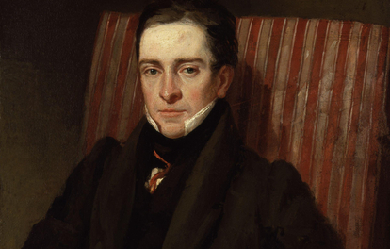
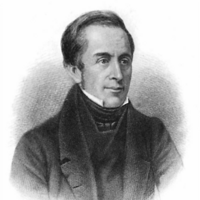
Thomas Hood (23 May 1799– 3 May 1845) was an English poet, author and humourist, best known for poems such as “The Bridge of Sighs” and “The Song of the Shirt”. Hood wrote regularly for The London Magazine, the Athenaeum, and Punch. He later published a magazine largely consisting of his own works. Hood, never robust, lapsed into invalidism by the age of 41 and died at the age of 45. William Michael Rossetti in 1903 called him “the finest English poet” between the generations of Shelley and Tennyson. Hood was the father of playwright and humourist Tom Hood (1835–1874).
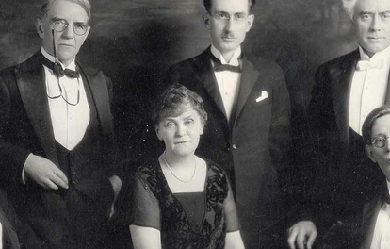

Bliss Carman FRSC (April 15, 1861– June 8, 1929) was a Canadian poet who lived most of his life in the United States, where he achieved international fame. He was acclaimed as Canada’s poet laureate during his later years. In Canada, Carman is classed as one of the Confederation Poets, a group which also included Charles G.D. Roberts (his cousin), Archibald Lampman, and Duncan Campbell Scott. “Of the group, Carman had the surest lyric touch and achieved the widest international recognition. But unlike others, he never attempted to secure his income by novel writing, popular journalism, or non-literary employment. He remained a poet, supplementing his art with critical commentaries on literary ideas, philosophy, and aesthetics.” Life He was born William Bliss Carman in Fredericton, in the Maritime province of New Brunswick. “Bliss” was his mother’s maiden name. He was the great grandson of United Empire Loyalists who fled to Nova Scotia after the American Revolution, settling in New Brunswick (then part of Nova Scotia). His literary roots run deep with an ancestry that includes a mother who was a descendant of Daniel Bliss of Concord, Massachusetts, the great-grandfather of Ralph Waldo Emerson. His sister married the botanist and historian William Francis Ganong. And on his mother’s side he was a first cousin to Charles (later Sir Charles) G. D. Roberts. Education and early career Carman was educated at the Fredericton Collegiate School and the University of New Brunswick (UNB), from which he received a B.A. in 1881. At the Collegiate School he came under the influence of headmaster George Robert Parkin, who gave him a love of classical literature and introduced him to the poetry of Dante Gabriel Rossetti and Algernon Charles Swinburne. His first published poem was in the UNB Monthly in 1879. He then spent a year at Oxford and the University of Edinburgh (1882–1883), but returned home to receive his M.A. from UNB in 1884. After the death of his father in January 1885 and his mother in February 1886, Carman enrolled in Harvard University (1886–1887). At Harvard he moved in a literary circle that included American poet Richard Hovey, who would become his close friend and his collaborator on the successful Vagabondia poetry series. Their circle included Herbert Copeland and F. Holland Day, who would later form the Boston publishing firm Copeland & Day that would launch Vagabondia. After Harvard Carman briefly returned to Canada, but was back in Boston by February 1890. “Boston is one of the few places where my critical education and tastes could be of any use to me in earning money,” he wrote. “New York and London are about the only other places.” Unable to find employment in Boston, he moved to New York City and became literary editor of the New York Independent at the grand sum of $20/week. There he could help his Canadian friends get published, in the process “introducing Canadian poets to its readers.” However, Carman was never a good fit at the semi-religious weekly, and he was summarily dismissed in 1892. "Brief stints would follow with Current Literature, Cosmopolitan, The Chap-Book, and The Atlantic Monthly, but after 1895 he would be strictly a contributor to the magazines and newspapers, never an editor in any department.” To make matters worse, Carman’s first book of poetry, 1893's Low Tide on Grand Pré, was not a success; no Canadian company would publish it, and the U.S. edition stiffed when its publisher went bankrupt. Literary success At this low point, Songs of Vagabondia, the first Hovey-Carman collaboration, was published by Copeland & Day in 1894. It was an immediate success. “No one could have been more surprised at the tremendous popularity of these care-free celebrations (the first of the three collections went through seven rapid editions) than the young authors, Richard Hovey and Bliss Carman.” Songs of Vagabondia would ultimately "go through sixteen printings (ranging from 500 to 1000 copies) over the next thirty years. The three Vagabondia volumes that followed fell slightly short of that record, but each went through numerous printings. Carman and Hovey quickly found themselves with a cult following, especially among college students, who responded to the poetry’s anti-materialistic themes, its celebration of individual freedom, and its glorification of comradeship.” The success of Songs of Vagabondia prompted another Boston firm, Stone & Kimball, to reissue Low Tide... and to hire Carman as the editor of its literary journal, The Chapbook. The next year, though, the editor’s job went West (with Stone & Kimball) to Chicago, while Carman opted to remain in Boston. “In Boston in 1895, he worked on a new poetry book, Behind the Arras, which he placed with a prominent Boston publisher (Lamson, Wolffe).... He published two more books of verse with Lamson, Wolffe." He also began writing a weekly column for the Boston Evening Transcript, which ran from 1895 to 1900. In 1896 Carman met Mary Perry King, who became the greatest and longest-lasting female influence in his life. Mrs. King became his patron: “She put pence in his purse, and food in his mouth, when he struck bottom and, what is more, she often put a song on his lips when he despaired, and helped him sell it.” According to Carman’s roommate, Mitchell Kennerley, "On rare occasions they had intimate relations at 10 E. 16 which they always advised me of by leaving a bunch of violets—Mary Perry’s favorite flower—on the pillow of my bed." If he knew of the latter, Dr. King did not object: "He even supported her involvement in the career of Bliss Carman to the extent that the situation developed into something close to a ménage à trois" with the Kings. Through Mrs. King’s influence Carman became an advocate of ‘unitrinianism,’ a philosophy which "drew on the theories of François-Alexandre-Nicolas-Chéri Delsarte to develop a strategy of mind-body-spirit harmonization aimed at undoing the physical, psychological, and spiritual damage caused by urban modernity." This shared belief created a bond between Mrs. King and Carman but estranged him somewhat from his former friends. In 1899 Lamson, Wolffe was taken over by the Boston firm of Small, Maynard & Co., who had also acquired the rights to Low Tide... "The rights to all Carman’s books were now held by one publisher and, in lieu of earnings, Carman took a financial stake in the company. When Small, Maynard failed in 1903, Carman lost all his assets.” Down but not out, Carman signed with another Boston company, L.C. Page, and began to churn out new work. Page published seven books of new Carman poetry between 1902 and 1905. As well, the firm released three books based on Carman’s Transcript columns, and a prose work on unitrinianism, The Making of Personality, that he’d written with Mrs. King. "Page also helped Carman rescue his ‘dream project,’ a deluxe edition of his collected poetry to 1903.... Page acquired distribution rights with the stipulation that the book be sold privately, by subscription. The project failed; Carman was deeply disappointed and became disenchanted with Page, whose grip on Carman’s copyrights would prevent the publication of another collected edition during Carman’s lifetime.” Carman also picked up some needed cash in 1904 as editor-in-chief of the 10-volume project, The World’s Best Poetry. Later years After 1908 Carman lived near the Kings’ New Canaan, Connecticut, estate, “Sunshine”, or in the summer in a cabin near their summer home in the Catskills, “Moonshine.” Between 1908 and 1920, literary taste began to shift, and his fortunes and health declined. “Although not a political activist, Carman during the First World War was a member of the Vigilantes, who supported American entry into the conflict on the Allied side.” By 1920, Carman was impoverished and recovering from a near-fatal attack of tuberculosis. That year he revisited Canada and “began the first of a series of successful and relatively lucrative reading tours, discovering ‘there is nothing worth talking of in book sales compared with reading.’” “'Breathless attention, crowded halls, and a strange, profound enthusiasm such as I never guessed could be,' he reported to a friend. ‘And good thrifty money too. Think of it! An entirely new life for me, and I am the most surprised person in Canada.’” Carman was feted at "a dinner held by the newly-formed Canadian Authors’ Association at the Ritz Carlton Hotel in Montreal on 28 October 1921 where he was crowned Canada’s Poet Laureate with a wreath of maple leaves.” The tours of Canada continued, and by 1925 Carman had finally acquired a Canadian publisher. "McClelland & Stewart (Toronto) issued a collection of selected earlier verses and became his main publisher. They benefited from Carman’s popularity and his revered position in Canadian literature, but no one could convince L.C. Page to relinquish its copyrights. An edition of collected poetry was published only after Carman’s death, due greatly to the persistence of his literary executor, Lorne Pierce.” During the 1920s, Carman was a member of the Halifax literary and social set, The Song Fishermen. In 1927 he edited The Oxford Book of American Verse. Carman died of a brain hemorrhage at the age of 68 in New Canaan, and was cremated in New Canaan. “It took two months, and the influence of New Brunswick’s Premier J.B.M. Baxter and Canadian Prime Minister W.L.M. King, for Carman’s ashes to be returned to Fredericton.” “His ashes were buried in Forest Hill Cemetery, Fredericton, and a national memorial service was held at the Anglican cathedral there.” Twenty-five years later, on May 13, 1954, a scarlet maple tree was planted at his gravesite, to grant his request in his 1892 poem “The Grave-Tree”: Let me have a scarlet maple For the grave-tree at my head, With the quiet sun behind it, In the years when I am dead. Writing Low Tide on Grand Pré As a student at Harvard, Carman “was heavily influenced by Royce, whose spiritualistic idealism, combined with the transcendentalism of Ralph Waldo Emerson, lies centrally in the background of his first major poem, ”Low Tide on Grand Pré" written in the summer and winter of 1886." “Low Tide...” was published in the Spring, 1887 Atlantic Monthly, giving Carman a literary reputation while still at Harvard. It was also included in the 1889 anthology, Songs of the Great Dominion. Literary critic Desmond Pacey considered “Low Tide...” to be “the most nearly perfect single poem to come out of Canada. It will withstand any amount of critical scrutiny.” “Low Tide...” served as the title poem for Carman’s first book. “The poems in this volume have been collected with reference to their similarity of tone,” Carman wrote in his preface; a nostalgic tone of pervading loss and melancholy. Three outstanding examples are “The Eavesdropper,” “In Apple Time” and “Wayfaring.” However, “none can equal the artistry of the title poem. What is more, although Carman would publish over thirty other volumes during his lifetime, none of them contains anything that surpasses this poem he wrote when he was barely twenty-five years old.” Vagabondia Carman rose to prominence in the 1890s, a decade the poetry of which anthologist Louis Untermeyer has called marked by “a cheerless evasion, a humorous unconcern; its most representative craftsmen were, with four exceptions, the writers of light verse.” The first two of those four exceptions were Richard Hovey and Bliss Carman. For Untermeyer: "The poetry of this period... is dead because it detached itself from the world.... But... revolt openly declared itself with the publication of Songs from Vagabondia (1894), More Songs from Vagabondia (1896), and Last Songs from Vagabondia (1900).... It was the heartiness, the gypsy jollity, the rush of high spirits, that conquered. Readers of the Vagabondia books were swept along by their speed faster than by their philosophy.” Even modernists loved Vagabondia. In the "October, 1912 issue of the London Poetry Review, Ezra Pound noted that he had ‘greatly enjoyed The Songs of Vagabondia by Mr. Bliss Carman and the late Richard Hovey.’” Carman’s most famous poem from the first volume is arguably “The Joys of the Open Road.” More Songs... contains “A Vagabond Song,” once familiar to a generation of Canadians. "Canadian youngsters who were in grade seven anytime between the mid-1930s and the 1950s were probably exposed to... 'A Vagabond Song’ [which] appeared in The Canada Book of Prose and Verse, Book One, the school reader that was used in nearly every province" (and was edited by Lorne Pierce). In 1912 Carman would publish Echoes from Vagabondia as a solo work. (Hovey had died in 1900). More of a remembrance book than part of the set, it has a distinct elegiac tone. It contains the lyric “The Flute of Spring”. Behind the Arras With Behind the Arras (1895), Carman continued his practice of “bringing together poems that were ‘in the same key.’ Whereas Low Tide on Grand Pré is elegiacal and melancholy, Songs from Vagabondia is mostly light and jaunty, while Behind the Arras is philosophical and heavy.” “Behind the Arras” the poem is a long meditation that uses the speaker’s house and its many rooms as a symbol of life and its choices. The poem does not succeed: “there are so many asides that the allegory is lost along with any point the poet hoped to make.” Ballad of Lost Haven In keeping with the “same key” idea, Carman’s Ballad of Lost Haven (1897) was a collection of poetry about the sea. Its notable poems include the macabre sea shanty, The Gravedigger. By the Aurelian Wall “By the Aurelian Wall” is Carman’s elegy to John Keats. It served as the title poem of his 1898 collection, a book of formal elegies. In the last poem in the book, “The Grave-Tree,” Carman writes about his own death. The Pipes of Pan “Pan, the goat-god, traditionally associated with poetry and with the fusion of the earthly and the divine, becomes Carman’s organizing symbol in the five volumes issued between 1902 and 1905" under the above title. Under the influence of Mrs. King, Carman had begun to write in both prose and poetry about the ideas of ‘unitrinianism,’ "a strategy of mind-body-spirit harmonization aimed at undoing the physical, psychological, and spiritual damage caused by urban modernity... therapeutic ideas [which] resulted in the five volumes of verse assembled in Pipes of Pan." The Dictionary of Canadian Biography (DCB) calls the series “a collection that contains many superb lyrics but, overall, evinces the dangers of a soporific aesthetic.” The 'superb lyrics’ include the much-anthologized “The Dead Faun” from Volume I, From the Book of Myths; “From the Green Book of the Bards”, the title poem of Volume II; “Lord of My Heart’s Elation” from the same volume; and many of the erotic poems of Volume III, Songs of the Sea Children (such as LIX “I loved you when the tide of prayer”). As a whole, though, the Pan series shows (perhaps more than any other work) the truth of Northrop Frye’s 1954 observation that Carman “badly needs a skillful and sympathetic selection.” Sappho: One Hundred Lyrics There were no such problems with Carman’s next book. Perhaps because of the underlying concept, Sappho: One Hundred Lyrics (1904) has a structure and unity that helps make it what has been called Carman’s “finest volume of poetry.” Sappho was an Ancient Greek poet from the island of Lesbos, who was included in the Greek canon of nine lyric poets. Most of her poetry, which was well-known and greatly admired throughout antiquity, has been lost, but her reputation has endured, supported by the surviving fragments of some of her poems. Carman’s method, as Charles G.D. Roberts saw it in his Introduction to the book,"apparently, has been to imagine each lost lyric as discovered, and then to translate it; for the indefinable flavor of the translation is maintained throughout, though accompanied by the fluidity and freedom of purely original work." It was a daunting task, as Roberts admits: “It is as if a sculptor of to-day were to set himself, with reverence, and trained craftsmanship, and studious familiarity with the spirit, technique, and atmosphere of his subject, to restore some statues of Polyclitus or Praxiteles of which he had but a broken arm, a foot, a knee, a finger upon which to build.” Yet, on the whole, Carman succeeded. “Written more or less contemporaneously with the love poems in Songs of the Sea Children, the Sappho reconstructions continue the amorous theme from a feminine point of view. Nevertheless, the feelings ascribed to Sappho are pure Carman in their sensitive and elegiac melancholy.” Virtually all of the lyrics are of high quality; some often-quoted are XXIII ("I loved thee, Atthis, in the long ago,"), LIV ("How soon will all my lovely days be over"), LXXIV ("If death be good"), LXXXII ("Over the roofs the honey-coloured moon"). “Next to Low Tide on Grand Pré, Sappho: One Hundred Lyrics seems to be the collection that continues to find the most favour among Carman’s critics. D.M.R. Bentley, for example, calls it ‘undoubtedly one of the most attractive, engaging and satisfying works of any of the Confederation poets.’” Bentley argued that "the brief, crisp lyrics of the Sappho volume almost certainly contributed to the aesthetic and practice of Imagism. Later work In his review of 1954's Selected Poems of Bliss Carman, literary critic Northrop Frye compared Carman and the other Confederation Poets to the Group of Seven: “Like the later painters, these poets were lyrical in tone and romantic in attitude; like the painters, they sought for the most part uninhabited landscape.” But Frye added: “The lyrical response to landscape is by itself, however, a kind of emotional photography, and like other forms of photography is occasional and epigrammatic.... Hence the lyric poet, after he has run his gamut of impressions, must die young, develop a more intellectualized attitude, or start repeating himself. Carman’s meeting of this challenge was only partly successful.” It is true that Carman had begun to repeat himself after Sappho. "Much of Carman’s writing in poetry and prose during the decade preceding World War I is as repetitive as the title of Echoes from Vagabondia (1912) intimates" says the DCB. What had made his poetry so remarkable at the beginning– that every new book was completely new– was gone. However, Carman’s career was by no means over. He "published four other collections of new poetry during his lifetime and two more were ready for publication at the time of his death: The Rough Rider, and Other Poems (1908), A Painter’s Holiday, and Other Poems (1911), April Airs (1916), Far Horizons (1925), Sanctuary (1929), and Wild Garden (1929). James Cappon’s comment on Far Horizons applies almost equally to the other five volumes: ‘There is nothing new in its poetic quality which has the sweet sadness of age rehearsing old tunes with an art which is now very smooth though with less vivacity than it used to have.’” Not only did Carman continue to write, but he continued to write fine poems: poems such as “The Old Grey Wall” (April Airs), the Wilfred Campbell-ish “Rivers of Canada” (Far Horizons), “The Ghost-yard of the Goldenrod” and “The Ships of Saint John” (Later Poems, 1926), and “The Winter Scene” (Sanctuary: The “Sunshine House” sonnets). The best of these have the same nostalgic air of melancholy and loss with which Carman began in “Low Tide...,” but now even more poignant as the poet approached his own death. Recognition In 1906 Carman received honorary degrees from UNB and McGill University. He was elected a corresponding Fellow of the Royal Society of Canada in 1925. The Society awarded him its Lorne Pierce Gold Medal in 1928. He was awarded a medal from the American Academy of Arts and Letters in 1929. In 1945, Carman was recognized as a Person of National Historic Significance by the government of Canada. Carman is honored by a sculpture erected on the UNB campus in 1947, which portrays him with fellow poets Sir Charles G.D. Roberts and Francis Joseph Sherman. There is a middle school named after him in Fredericton, New Brunswick (Bliss Carman Middle School). There is also a school named after him in Toronto, Ontario. “Bliss Carman Heights” (an extension of the Skyline Acres subdivision) is a subdivision located in Fredericton, New Brunswick overlooking the Saint John River. It consists of Essex Street, Gloucester Crescent, Reading Street, Ascot Court, and Ascot Drive. An extension of the Bliss Carman Heights subdivision is named “Poet’s Hill” and consists of Bliss Carman Drive, Poets Lane and Windflower Court (named for one of Carman’s poems of the same name). In October 1916, American composer Leo Sowerby was inspired to write his best-known organ piece, “Comes Autumn Time,” after reading Carman’s poem, “Autumn,” in the Literature section of the Sunday Edition of the Chicago Tribune on October 16 of that year. Publications Poetry collections * Low Tide on Grand Pre: A Book Of Lyrics. New York: Charles L. Webster. 1893. - Low Tide on Grand Pré: A Book of Lyrics at Google Books * Carman, Bliss; Hovey, Richard (1894). Songs From Vagabondia. Tom B. Meteyard, Illus. Boston: Copeland & Day. – Songs from Vagabondia at Google Books– A Vagabondia Songs (2013 Reprint) at Google Books * A Seamark: A Threnody for Robert Louis Stevenson. Boston: Copeland & Day. 1895. - A Seamark: A Threnody for Robert Louis Stevenson at Google Books * Behind The Arras: A Book Of The Unseen. Tom B. Meteyard, Illus. Boston: Lamson, Wolffe. 1895. * Ballads of Lost Haven: A Book Of The Sea. Boston: Lamson, Wolffe. 1897. * By The Aurelian Wall: And Other Elegies. Boston: Lamson, Wolffe. 1898. * Carman, Bliss; Hovey, Richard (1896). More Songs From Vagabondia. Tom B. Meteyard, Illus. Boston: Copeland & Day. – More Songs from Vagabondia at Google Books– A Vagabondia Songs (2013 Reprint) at Google Books * A Winter Holiday. Boston: Small, Maynard. 1899. * Carman, Bliss; Hovey, Richard (1901). Last Songs From Vagabondia. Tom B. Meteyard, Illus. Boston: Small, Maynard. – Last Songs from Vagabondia at Google Books– A Vagabondia Songs (2013 Reprint) at Google Books * Ballads and Lyrics. London: A.H. Bullen. 1902. * Ode on the Coronation of King Edward. Boston: L.C. Page. 1902. * Pipes Of Pan: From the Book of Myths. Boston: L.C. Page. 1902. - Pipes Of Pan: From the Book of Myths at Google Books * Pipes Of Pan: From the Green Book of the Bards. Boston: L.C. Page. 1903. - Pipes Of Pan: From the Green Book of the Bards at Google Books * Pipes Of Pan: Songs of the Sea Children. Boston: L.C. Page. 1904. - Pipes Of Pan: Songs of the Sea Children at Google Books * Pipes Of Pan: Songs From a Northern Garden. Boston: L.C. Page. 1904. - Pipes Of Pan: Songs From a Northern Garden at Google Books * Pipes Of Pan: From the Book of Valentines. Boston: L.C. Page. 1905. - Pipes Of Pan: From the Book of Valentines at Google Books * Sappho: One Hundred Lyrics. Intro. by Charles G.D. Roberts. Boston: L.C. Page. 1904. * Poems. (London: Chiswick P, 1905). * The Rough Rider: And Other Poems. New York: M. Kennerley. 1909. * A Painter’s Holiday, and Other Poems. New York: F.F. Sherman. 1911. * Echoes From Vagabondia. Boston: Small, Maynard. 1912. * April Airs: A Book Of New England Lyrics. Boston: Small, Maynard. 1916. * Carman, Bliss; King, Mary Perry (1918). The Man of The Marne: And Other Poems. New Canaan, Connecticut: Ponus Press. * The Vengeance of Noel Brassard: A Tale of the Acadian Expulsion (PDF). Cambridge, Massachusetts: The University Press. 1919. * Far Horizons. Boston: Small, Maynard and Company. 1925. - Far Horizons at Google Books * Later Poems. Toronto: McClelland & Steward. 1926. * Sanctuary: Sunshine House Sonnets. Whitman Bailey, Illus. Toronto: McClelland & Steward. 1929. * Wild Garden. Toronto: McClelland & Steward. 1929. * Bliss Carman’s Poems. New York: Dodd, Mead. 1931. - Bliss Carman’s Poems at Google Books * Pierce, Lorne, ed. (1954). The Selected Poems Of Bliss Carman. Toronto: McClelland & Stewart. * A Vision Of Sappho. Toronto: Canadiana House. 1968. * The Poems of Bliss Carman. Toronto: McClelland & Stewart. 1976. ISBN 978-0-7710-9509-2. * Souster, Raymond; Lochhead, Douglas, eds. (1985). Windflower: Poems Of Bliss Carman. Ottawa: Tecumseh. ISBN 978-0-919662-07-0. Drama * Bliss Carman and Mary Perry King. Daughters of Dawn: A Lyrical Pageant of Series of Historical Scenes for Presentation With Music and Dancing. (New York: M. Kennerley, 1913). * Bliss Carman and Mary Perry King. Earth Deities: And Other Rhythmic Masques. (New York: M. Kennerley, 1914). Prose collections * The Kinship Of Nature. Boston: L. C. Page. 1904. * The Poetry Of Life. Boston: L. C. Page. 1905. - The poetry of life (1906 ed.) at Google Books * The Friendship of Art. Boston: L. C. Page. 1908. - The Friendship of Art (Scholar’s Choice ed.). ISBN 978-1-2981-9930-0. * The Making of Personality. Boston: L. C. Page. 1908. - The Making of Personality at Google Books * Talks on Poetry and Life; Being a Series of Five Lectures Delivered Before the University of Toronto, December 1925 (Speech). transcribed by Blanche Hume. 1926. * Pierce, Lorne, ed. (1931). Bliss Carman’s Scrap-Book: A Table Of Contents. Toronto: Ryerson. * Gundy, H. Pearson, ed. (1982). Letters of Bliss Carman. Kingston, Ontario: McGill-Queen’s University Press. Edited * The World’s Best Poetry (10 volumes). New York: The University Society. 1904. - The World’s best poetry, Volume 1 at Google Books * The Oxford Book of American Verse (U.S. ed.). New York: Albert & Charles Boni. 1927. * Carman, Bliss; Pierce, Lorne, eds. (1935). Our Canadian Literature: Representative Verse, English and French. Toronto: Ryerson. Archive * Bliss Carman Papers, 1889–1927 (2 linear ft.) are housed in the Department of Special Collections and University Archives at Stanford University Libraries Sources * "Bliss Carman’s Letters To Margaret Lawrence, 1927-1929". Post-Confederation Poetry: Texts And Contexts. Ed. D.M.R. Bentley. London: Canadian Poetry P, 1995. * Bliss Carman: A Reappraisal. Ed. Gerald Lynch. Ottawa: University Of Ottawa Press, 1990. * Letters of Bliss Carman. Ed. H. Pearson Gundy. Kingston: McGill-Queen’s University P, 1981. * Hugh McPherson. The Literary Reputation Of Bliss Carman: A Study In The Development Of Canadian Taste In Poetry. 1950. * Muriel Miller. Bliss Carman, A Portrait. Toronto: Ryerson, 1935. * Muriel Miller. Bliss Carman: Quest And Revolt. St. John’s, Nfld.: Jesperson P, 1985. * Donald G Stephens. Bliss Carman. 1966. * Donald G. Stephens. The Influence Of English Poets Upon The Poetry Of Bliss Carman. 1955. * Margaret A. Stewart. Bliss Carman: Poet, Philosopher, Teacher. 1976. Further reading * Robert Gibbs, “Voice and Persona in Carman and Roberts,” in Atlantic Provinces Literature Colloquium Papers [ed. by Kenneth MacKinnon] (1977) * Nelson-McDermott, C. (Fall–Winter 1990). “Passionate Beauty: Carman’s Sappho Poems”. Canadian Poetry: Studies/Documents/Reviews (Canadian Poetry Press) 27: 40–45. * Malcolm Ross, “A Strange Aesthetic Ferment,” Canadian Literature, 68-69 (Spring-Summer 1976) * John Robert Sorfleet, "Transcendentalist, Mystic, Evolutionary Idealist: Bliss Carman 1886-1894," in Colony and Confederation [ed. George Woodcock](1974) * Thomas B. Vincent, “Bliss Carman: A Life in Literary Publishing,” Historical Perspectives on Canadian Publishing, McMaster.ca. Web. * Symons, Arthur (Fall–Winter 1995). Ware, Tracy, ed. “Arthur Symons’ Reviews of Bliss Carman”. Canadian Poetry: Studies/Documents/Reviews (Canadian Poetry Press) 37: 100–113. * Terry Whalen, Canadian Writers and Their Work: Volume Two [ed. Robert Lecker, Ellen Quigley, & Jack David] (1983) References Wikipedia—https://en.wikipedia.org/wiki/Bliss_Carman
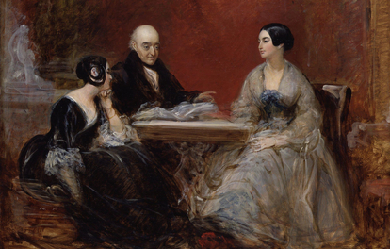
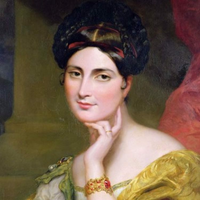
Caroline Elizabeth Sarah Norton (22 March 1808 – 15 June 1877) was an English social reformer, and author of the early and mid-nineteenth century. Caroline left her husband in 1836, following which her husband sued her close friend Lord Melbourne, the then Whig Prime Minister, for criminal conversation. The jury threw out the claim, but Caroline was unable to obtain a divorce and was denied access to her three sons. Caroline's intense campaigning led to the passing of the Custody of Infants Act 1839, the Matrimonial Causes Act 1857 and the Married Women's Property Act 1870. Caroline modelled for the fresco of Justice in the House of Lords by Daniel Maclise, who chose her because she was seen by many as a famous victim of injustice.


